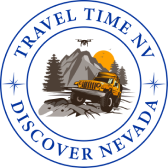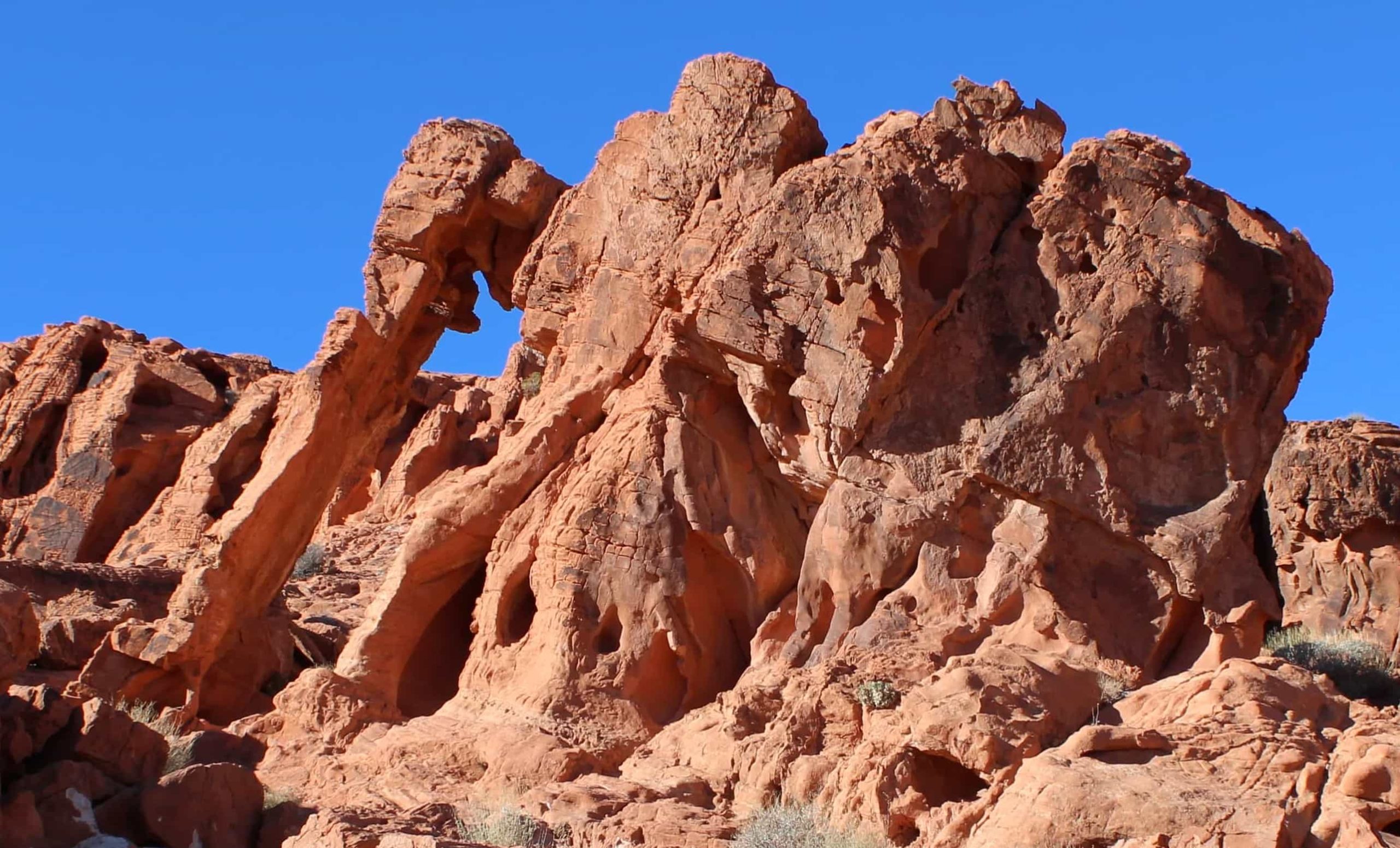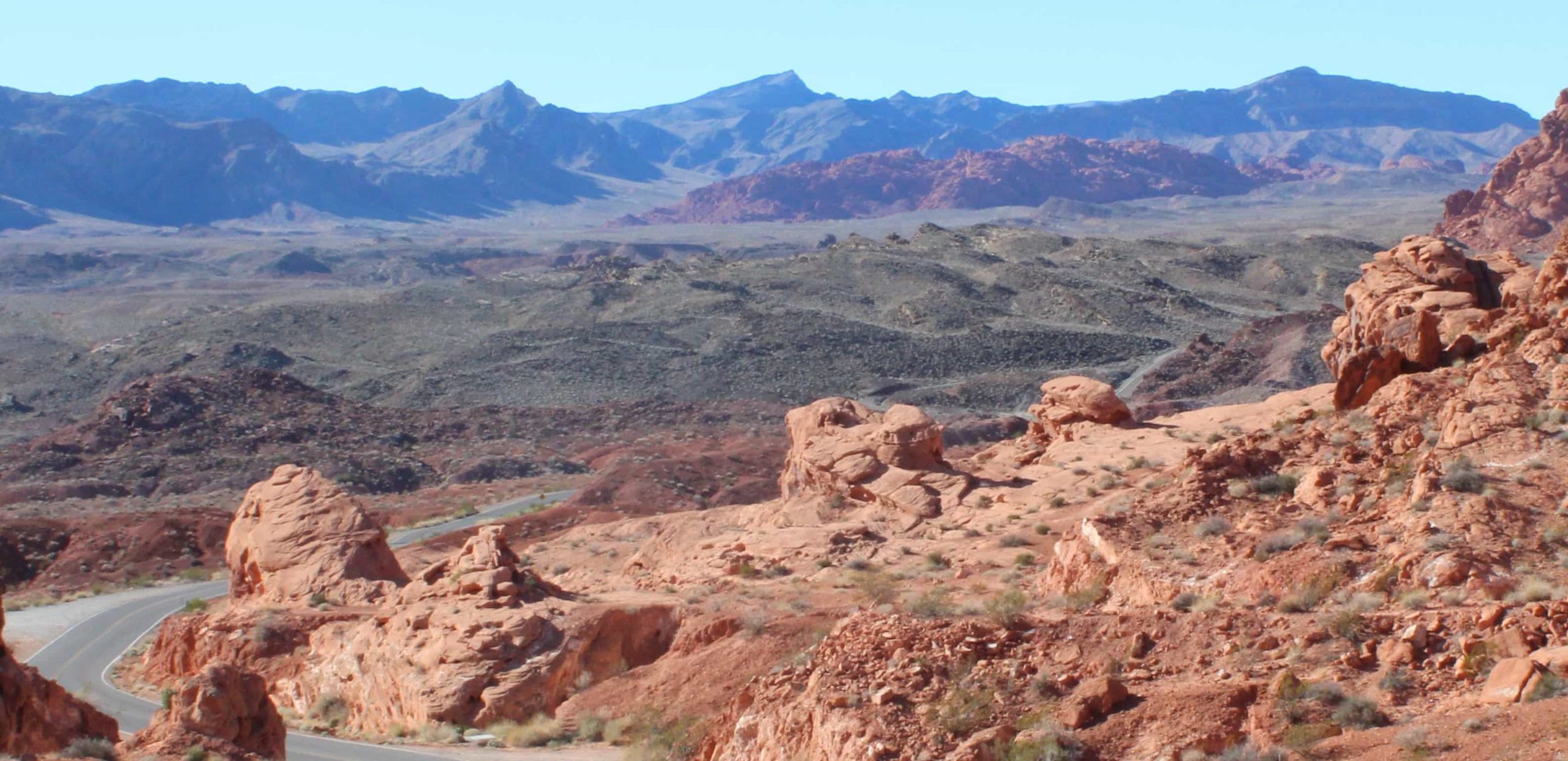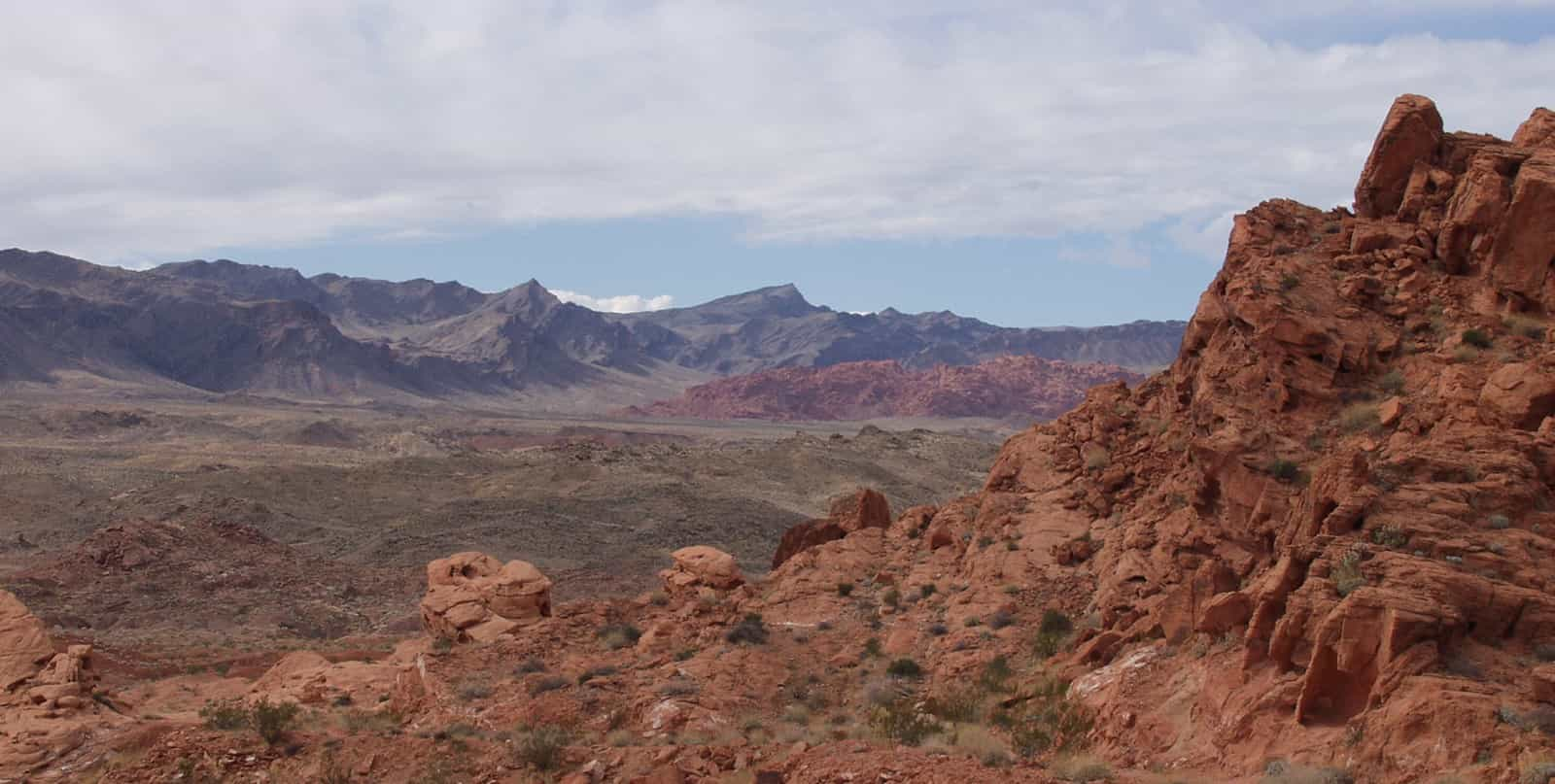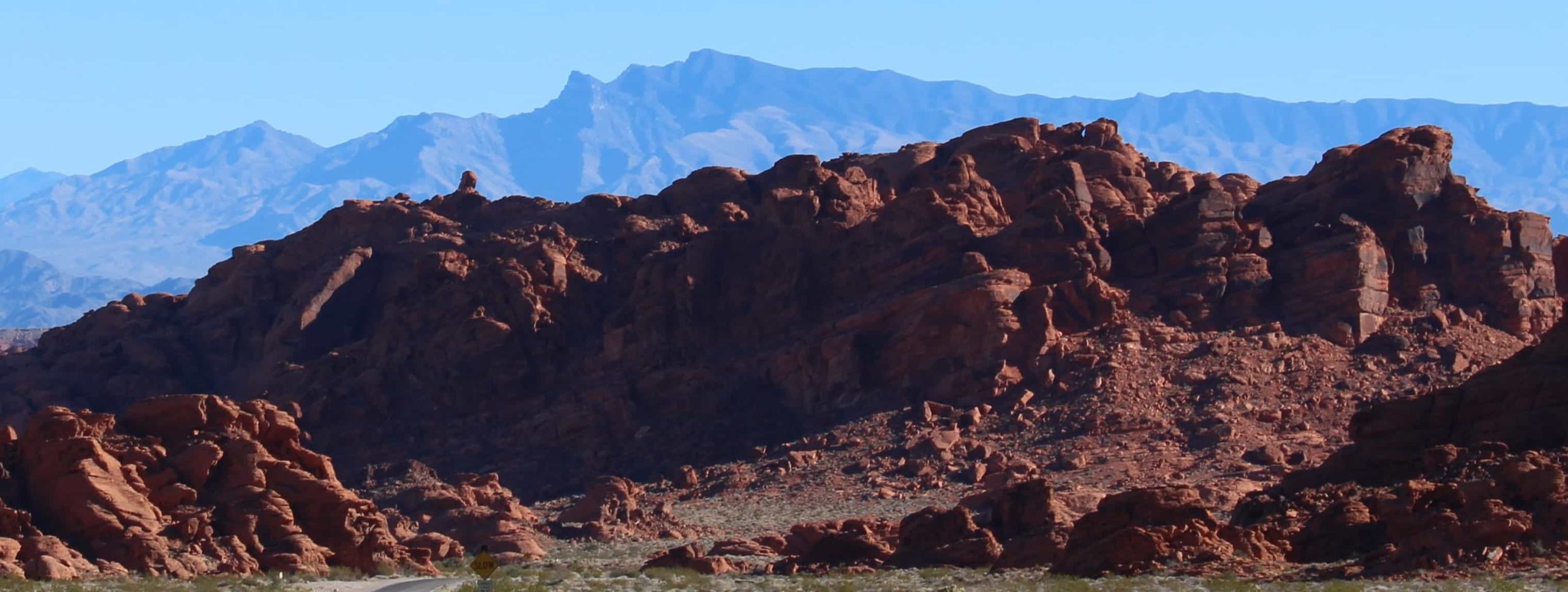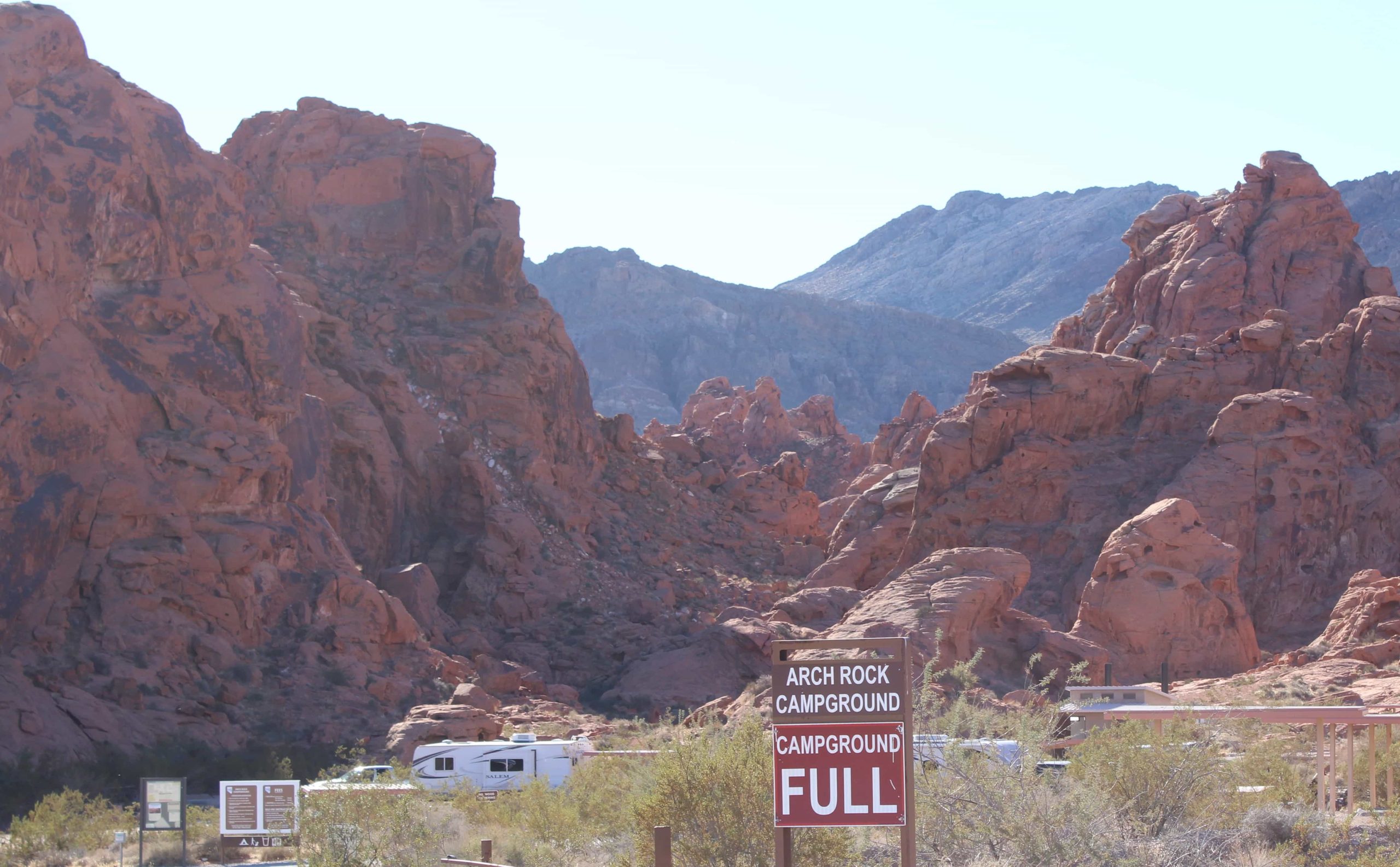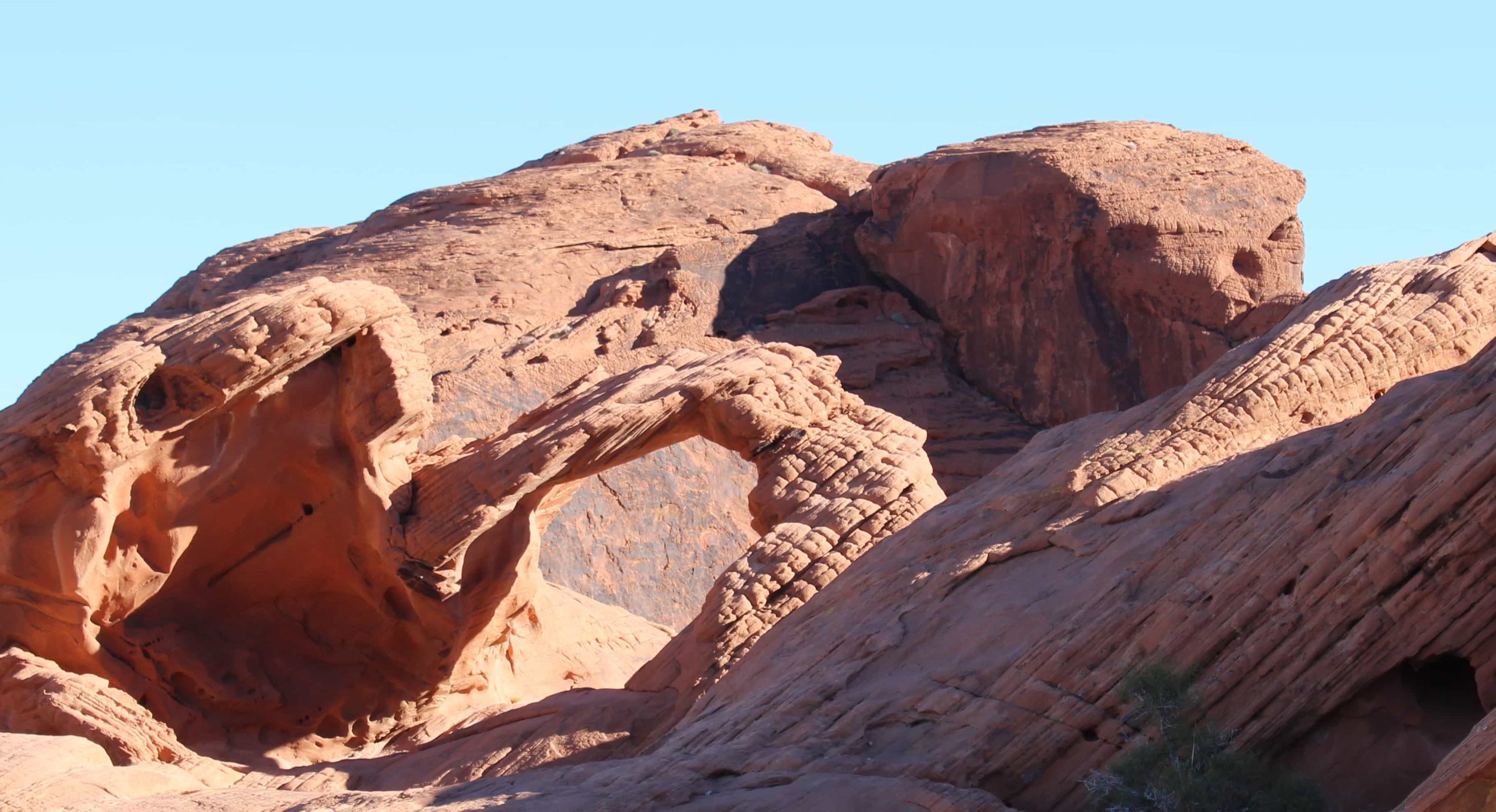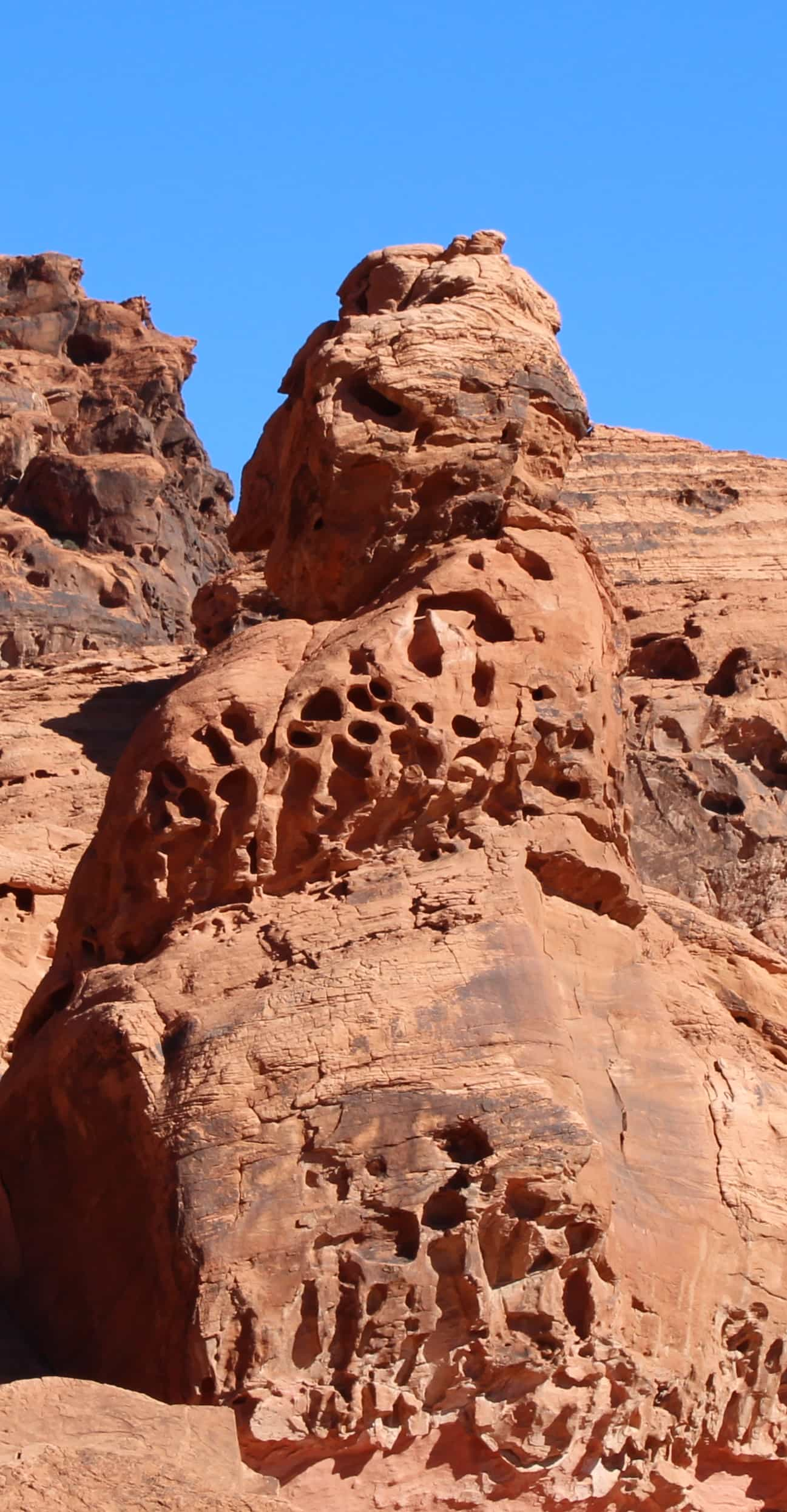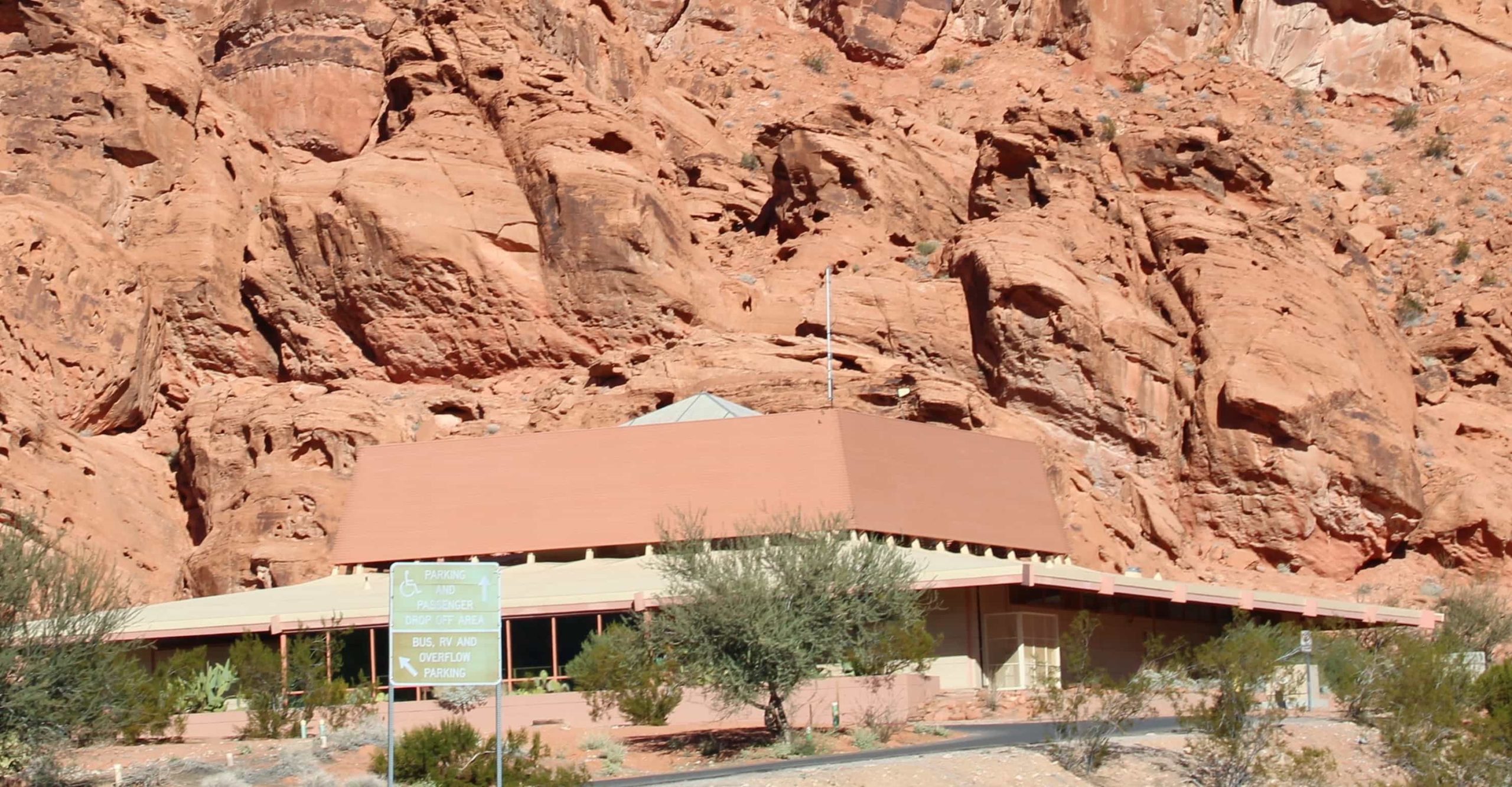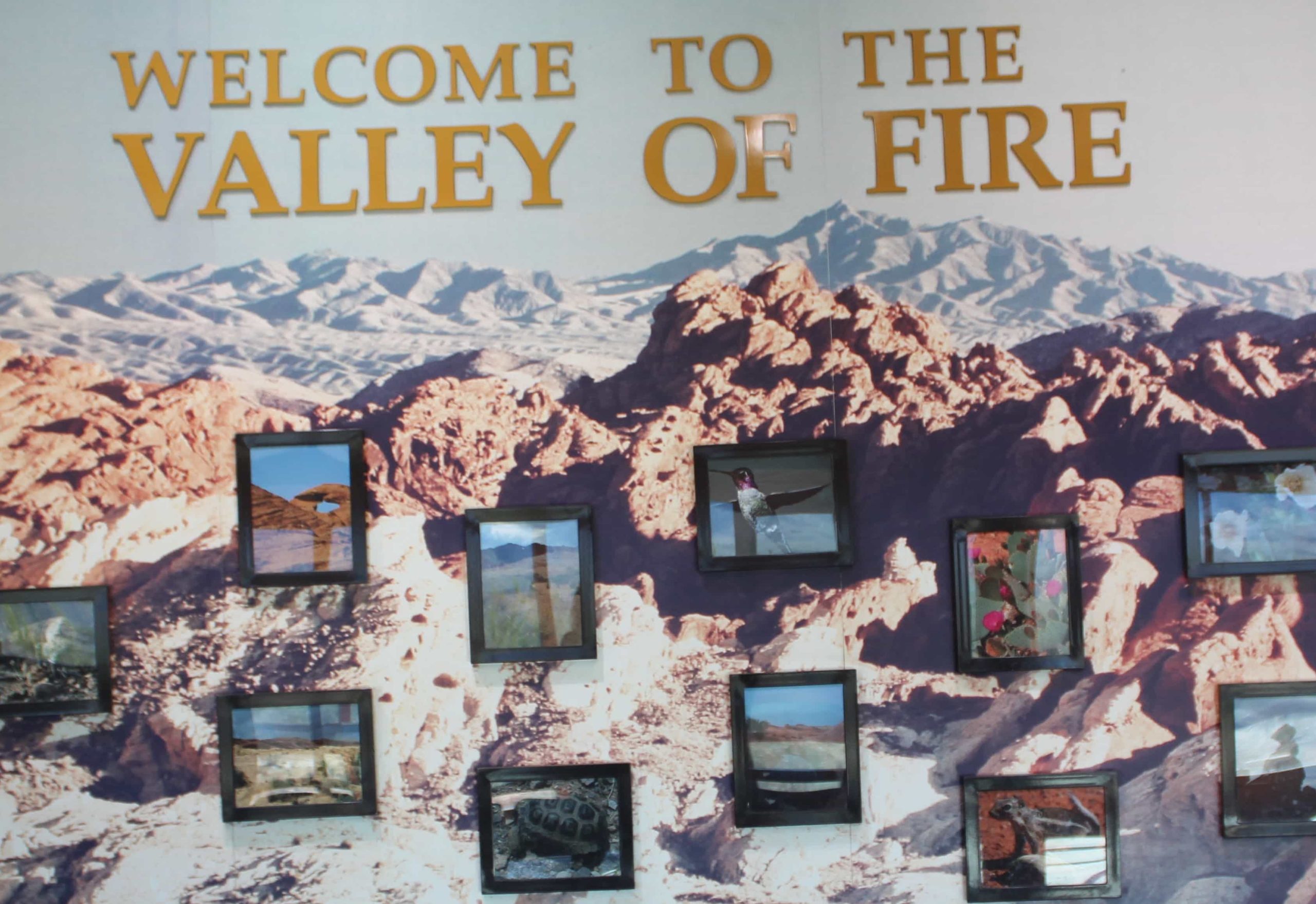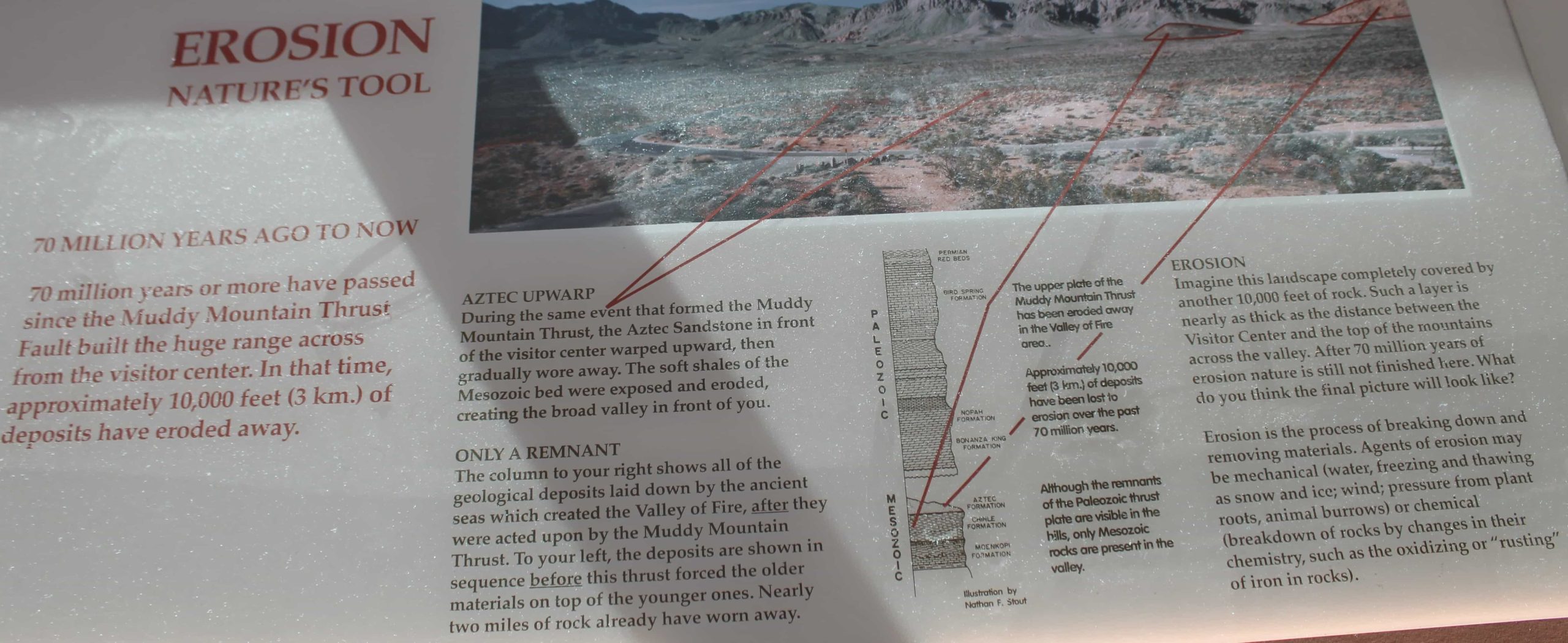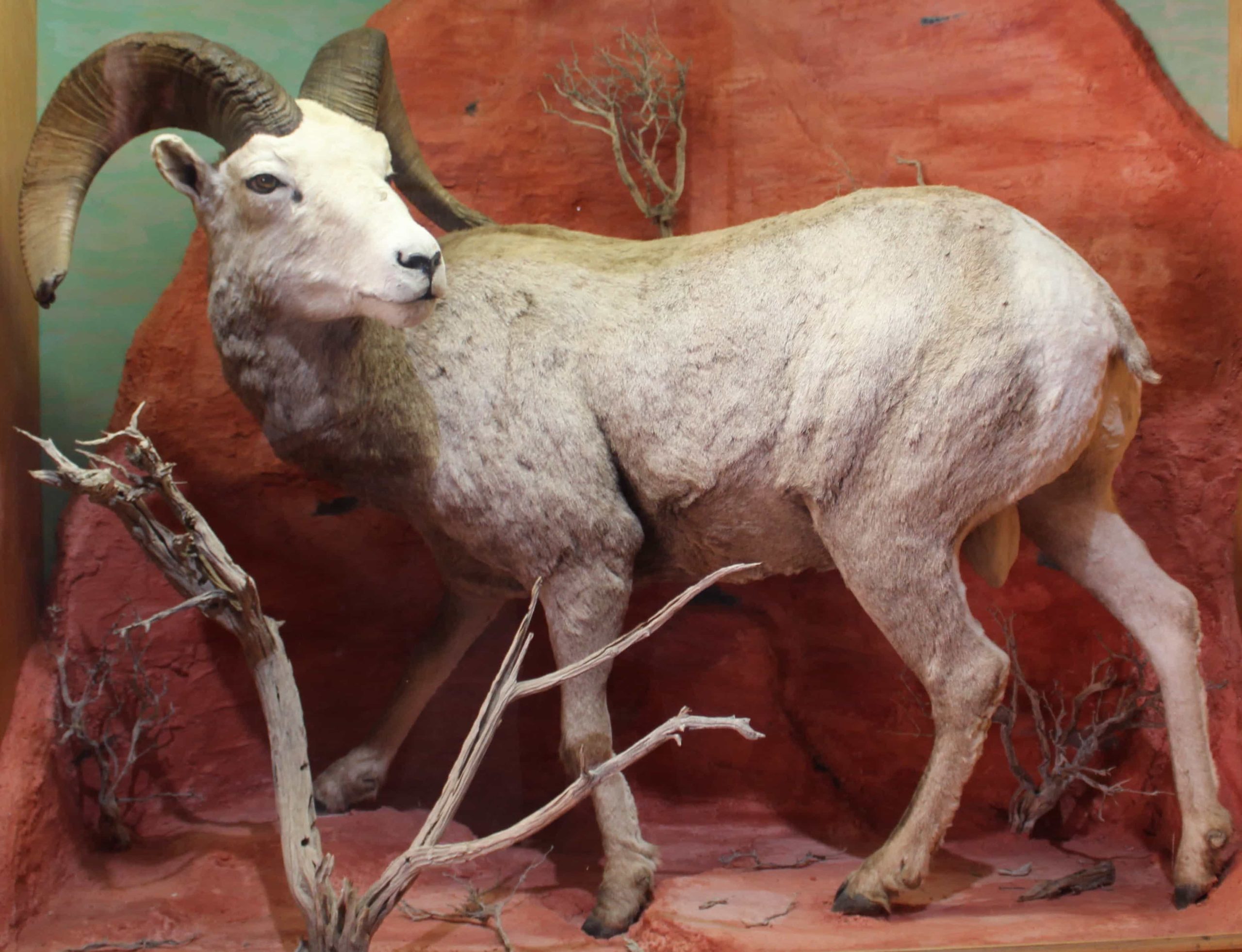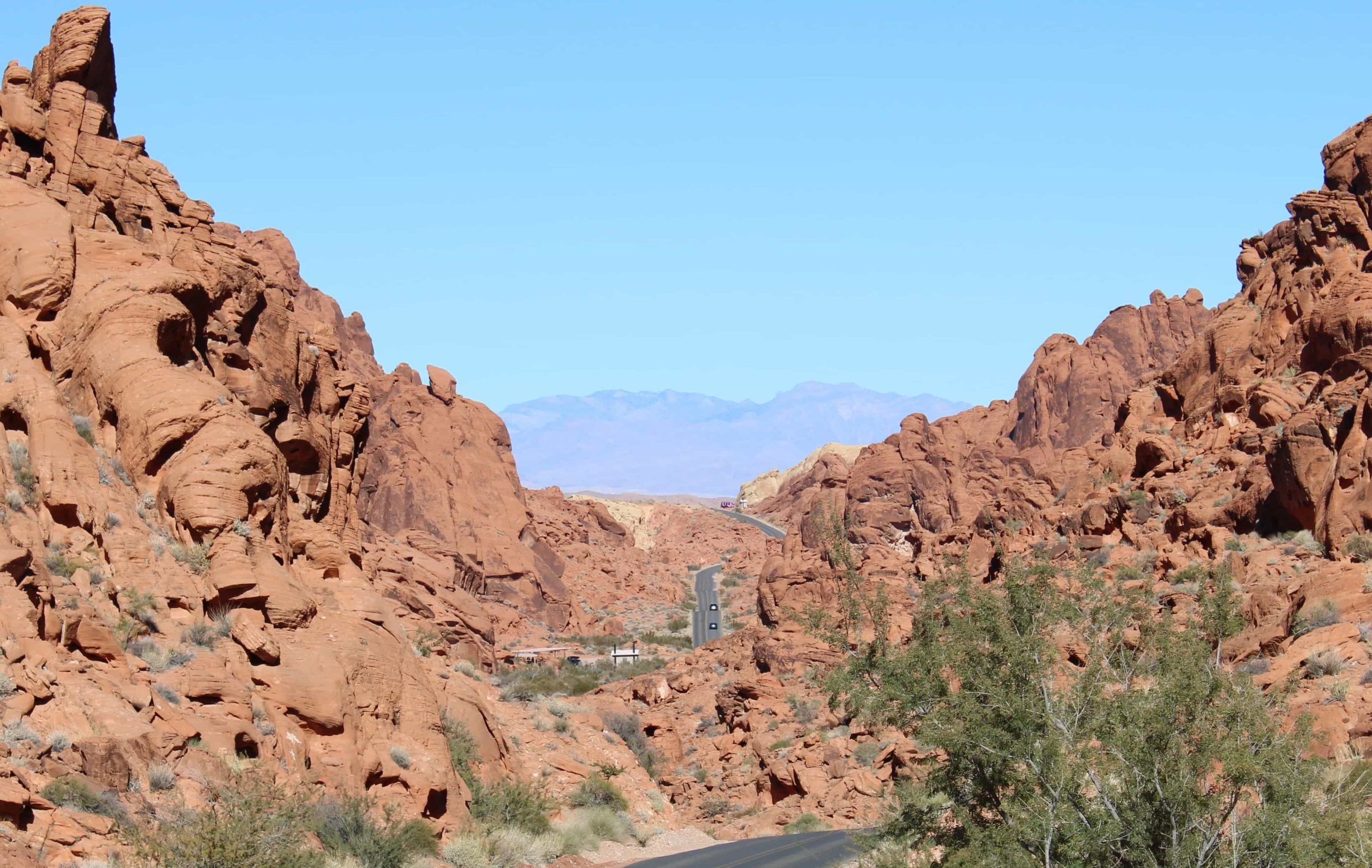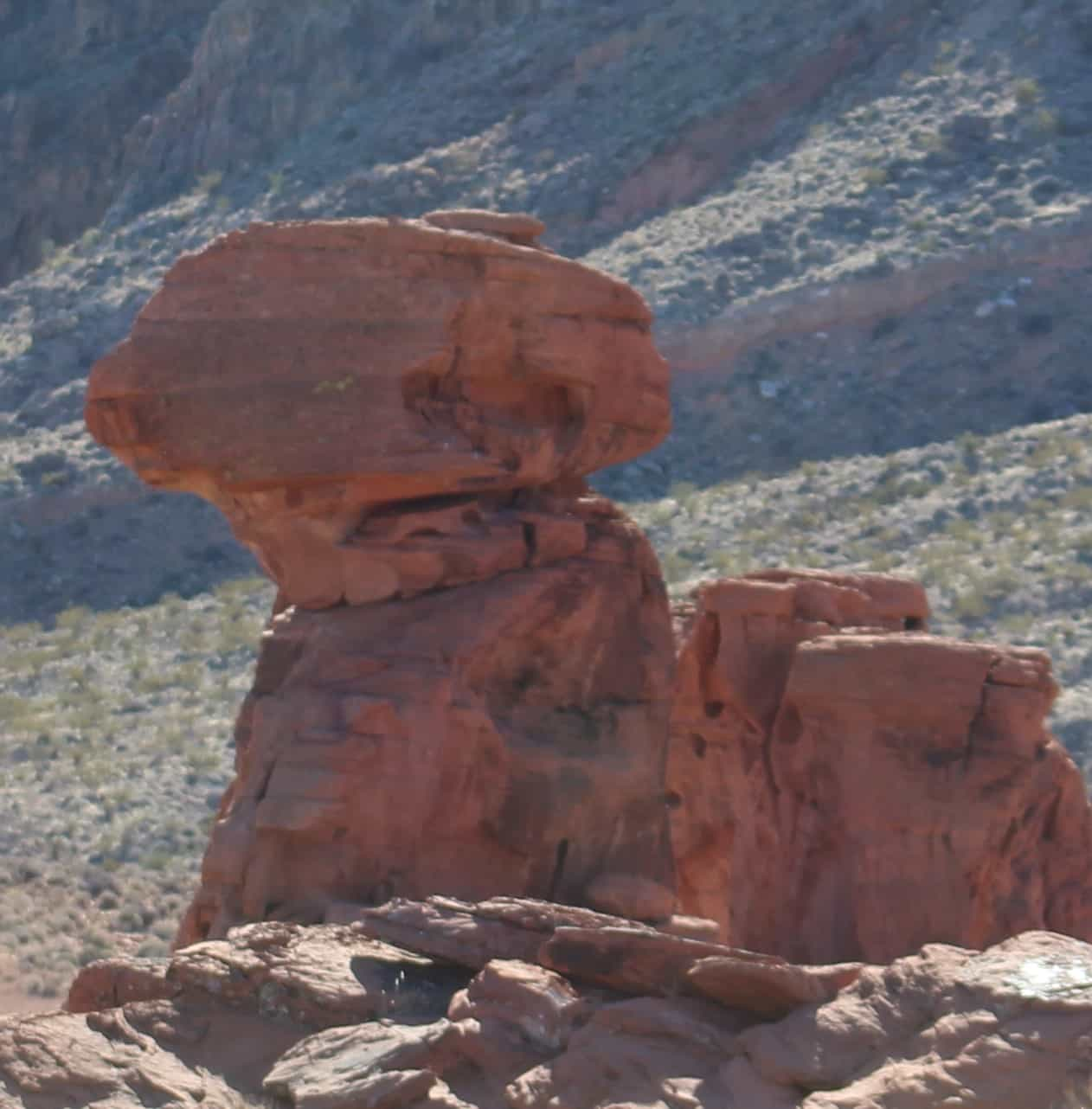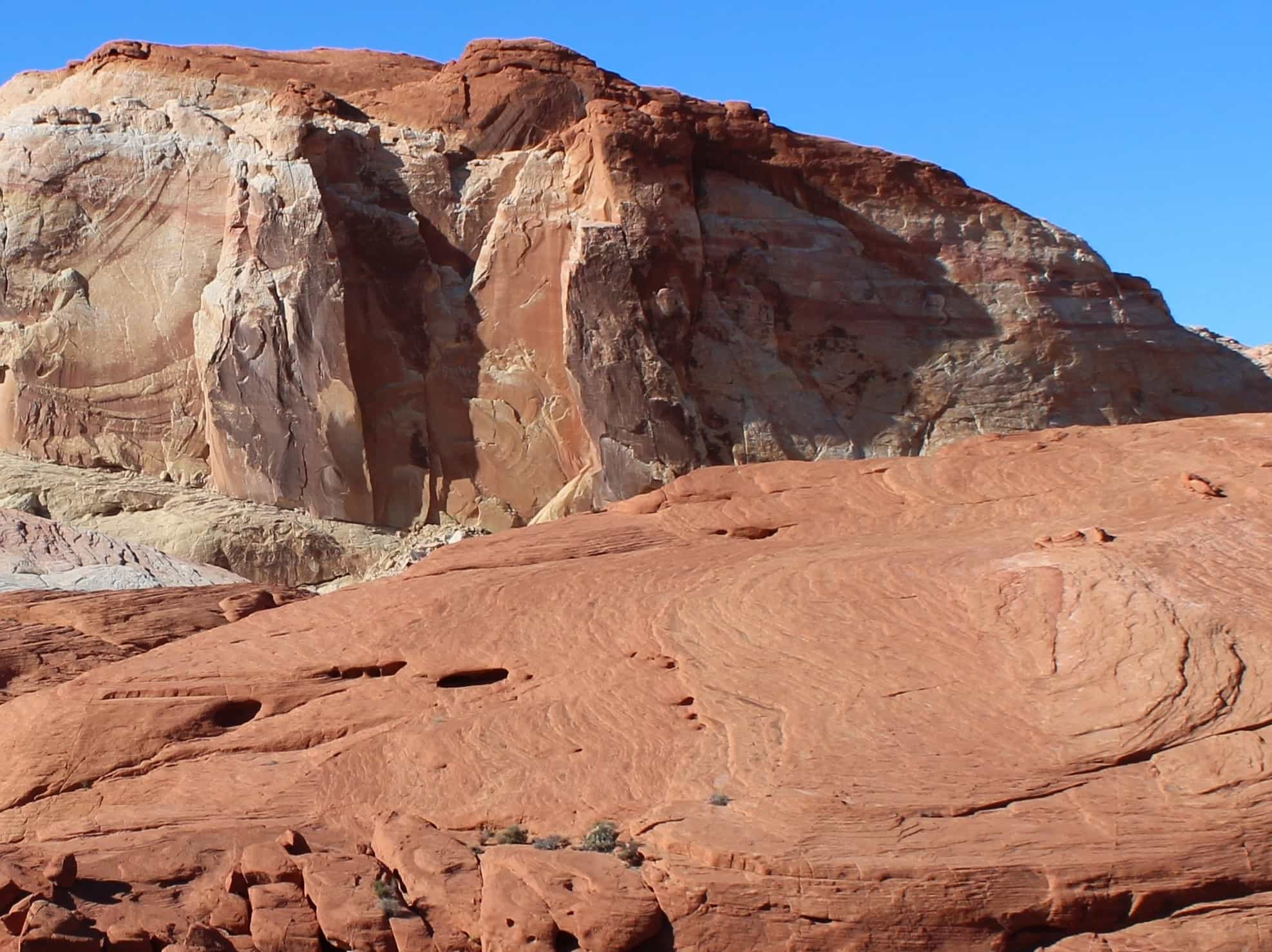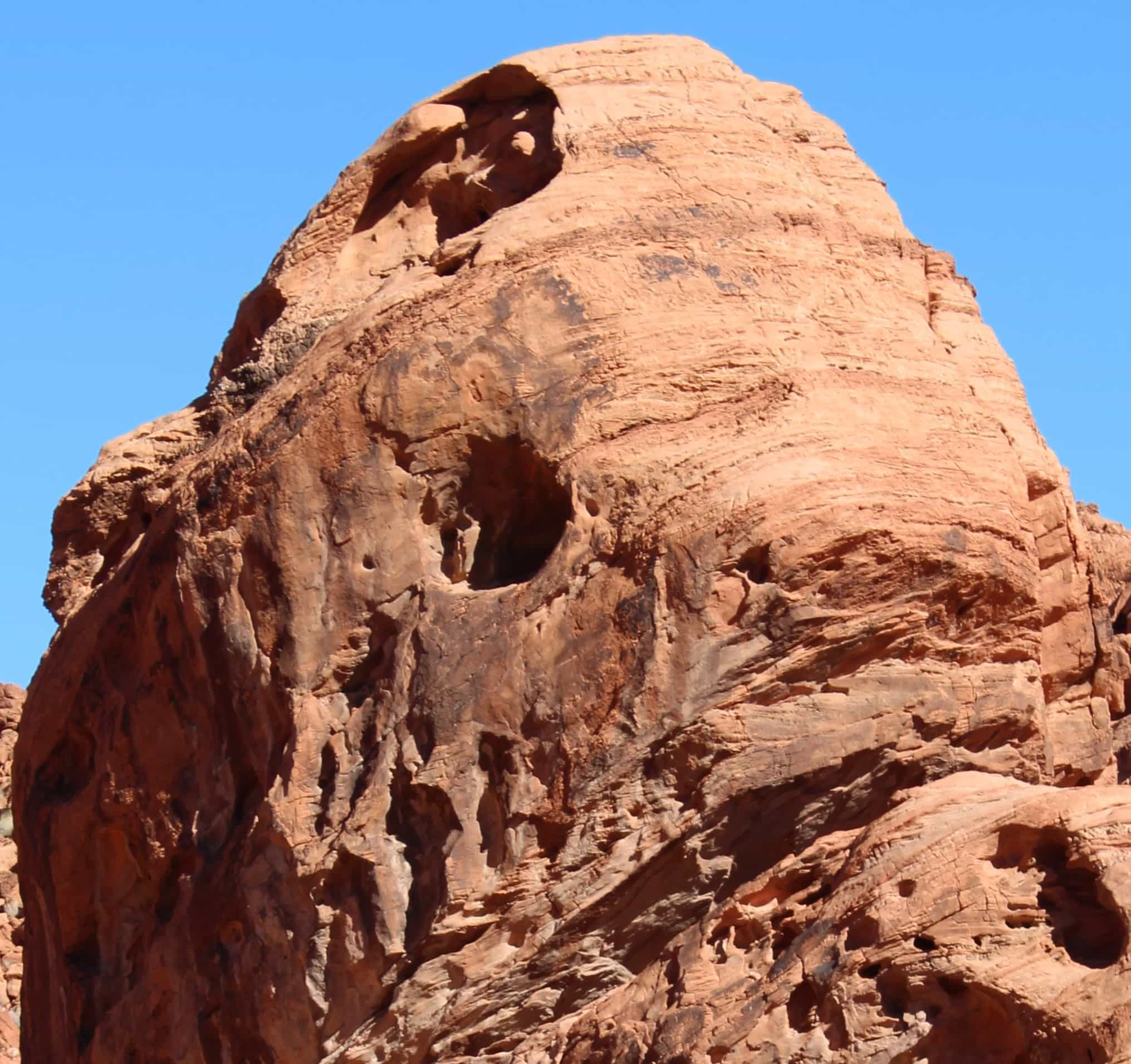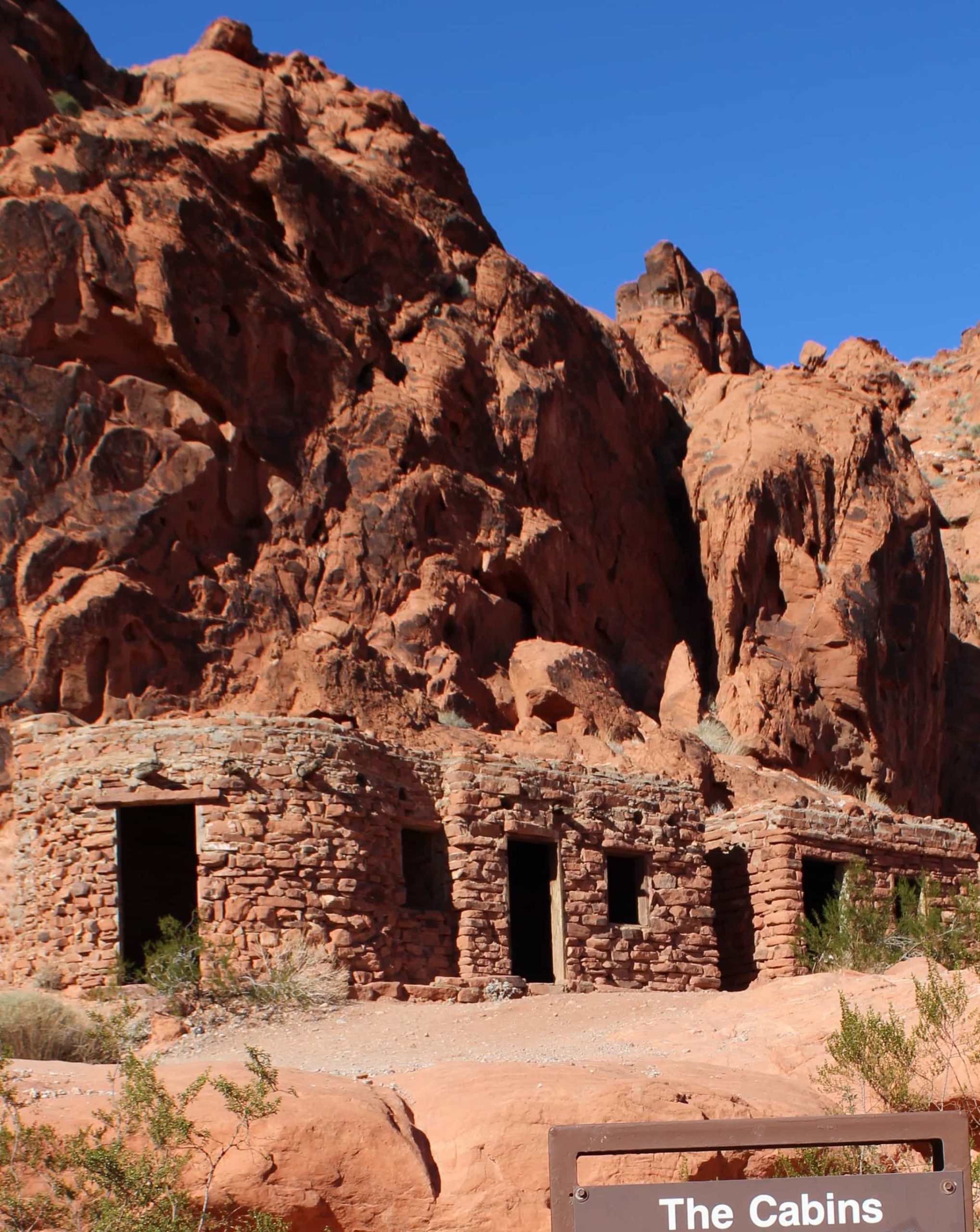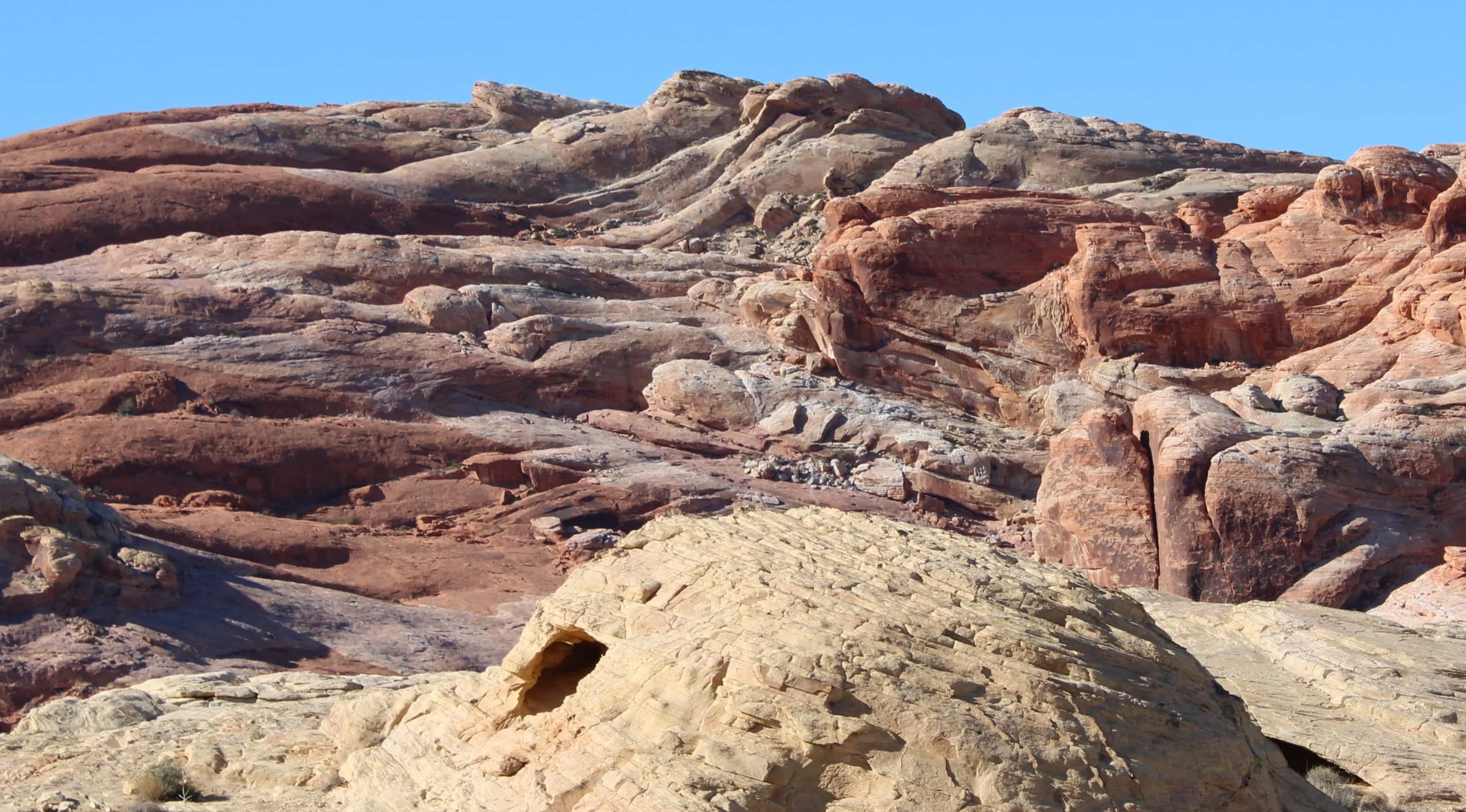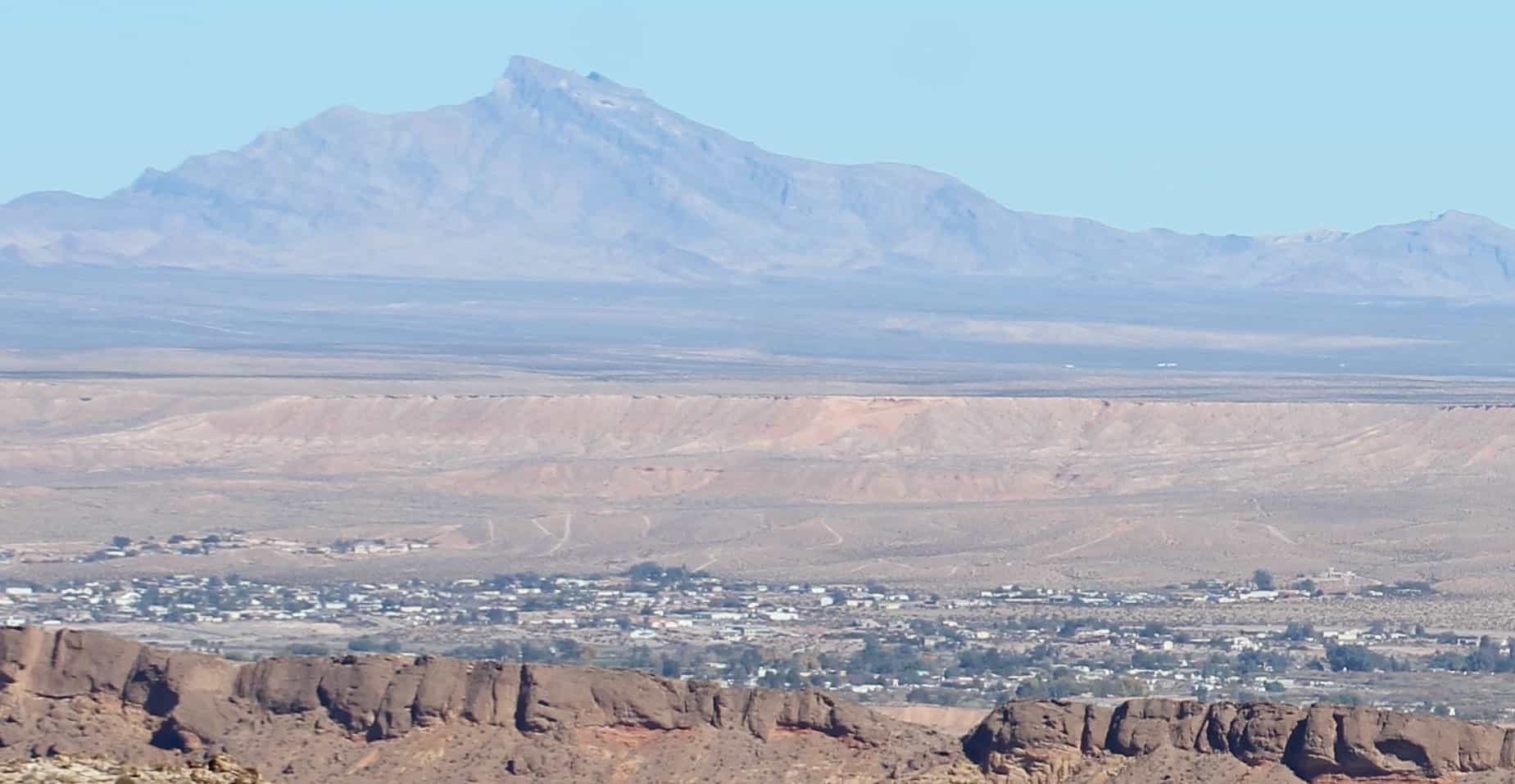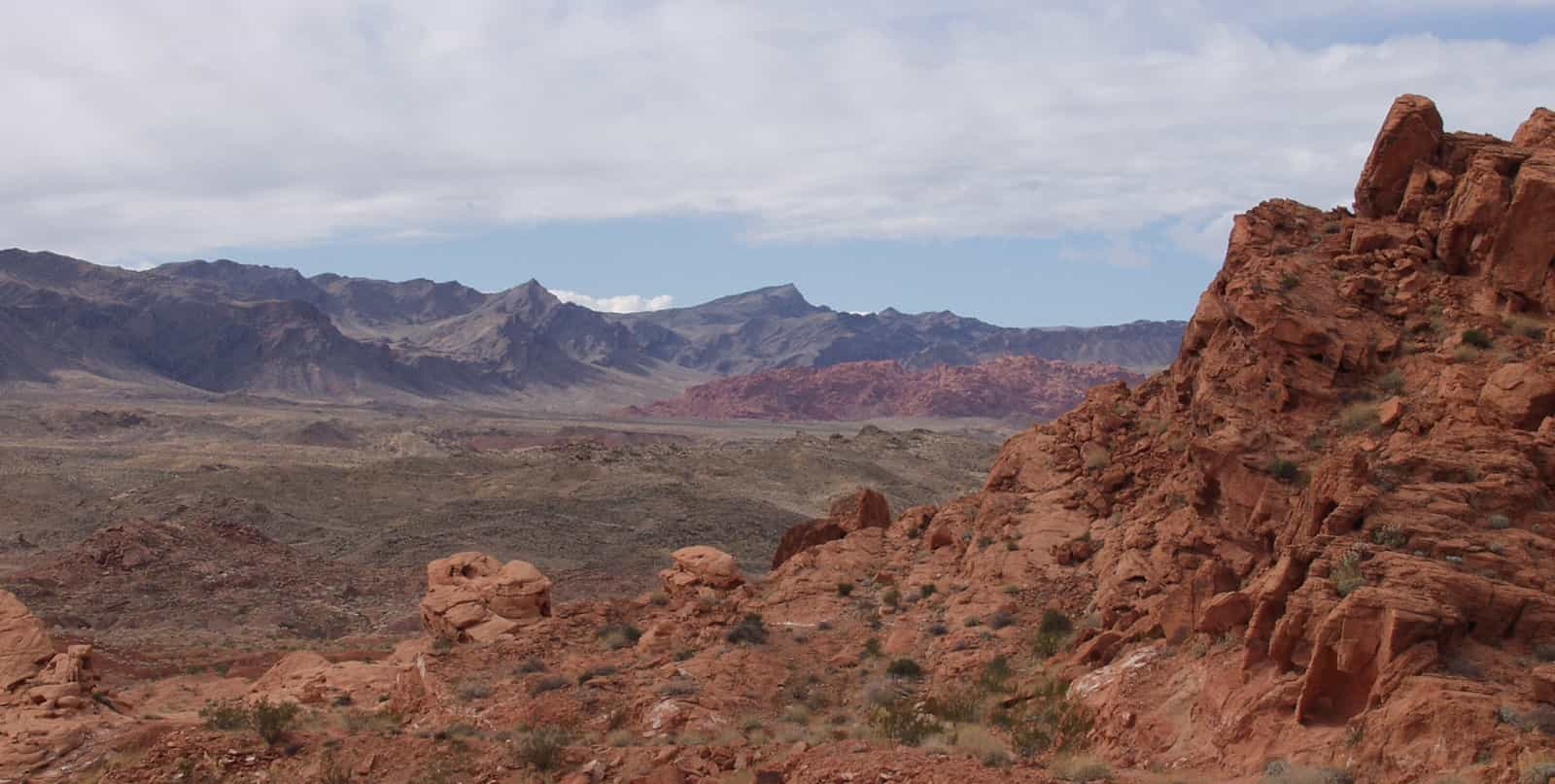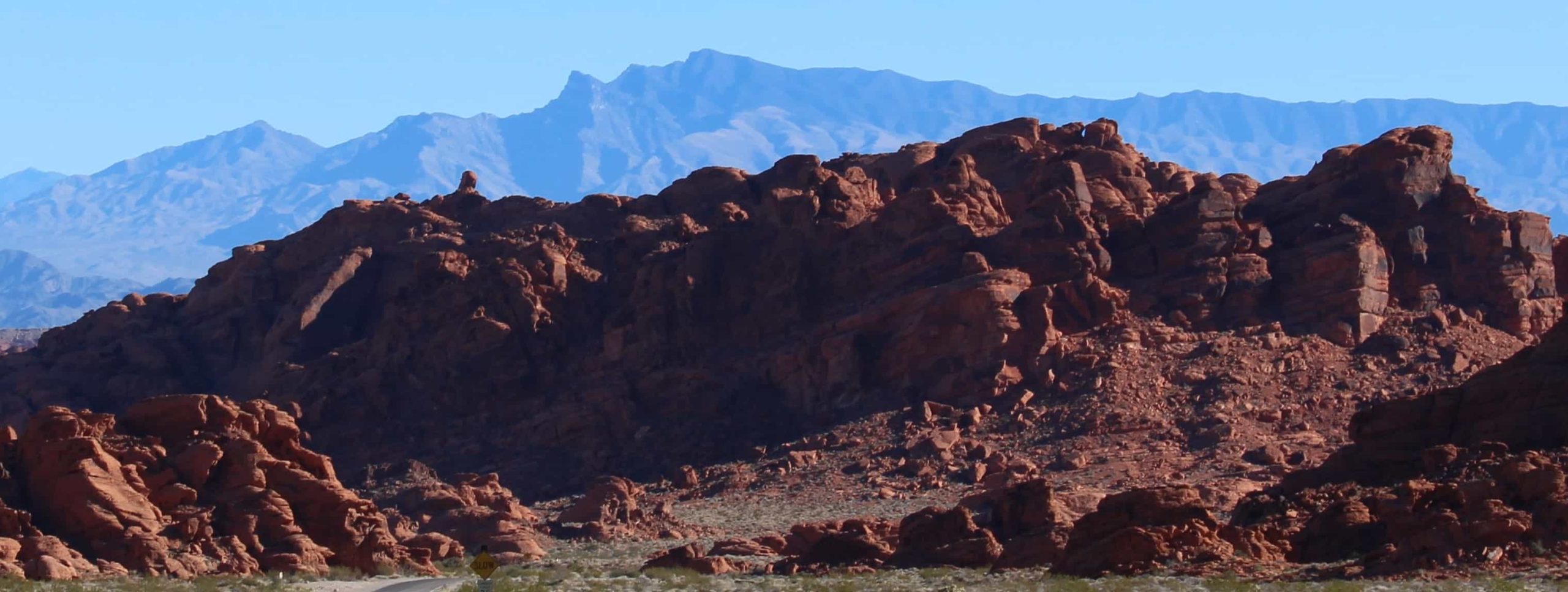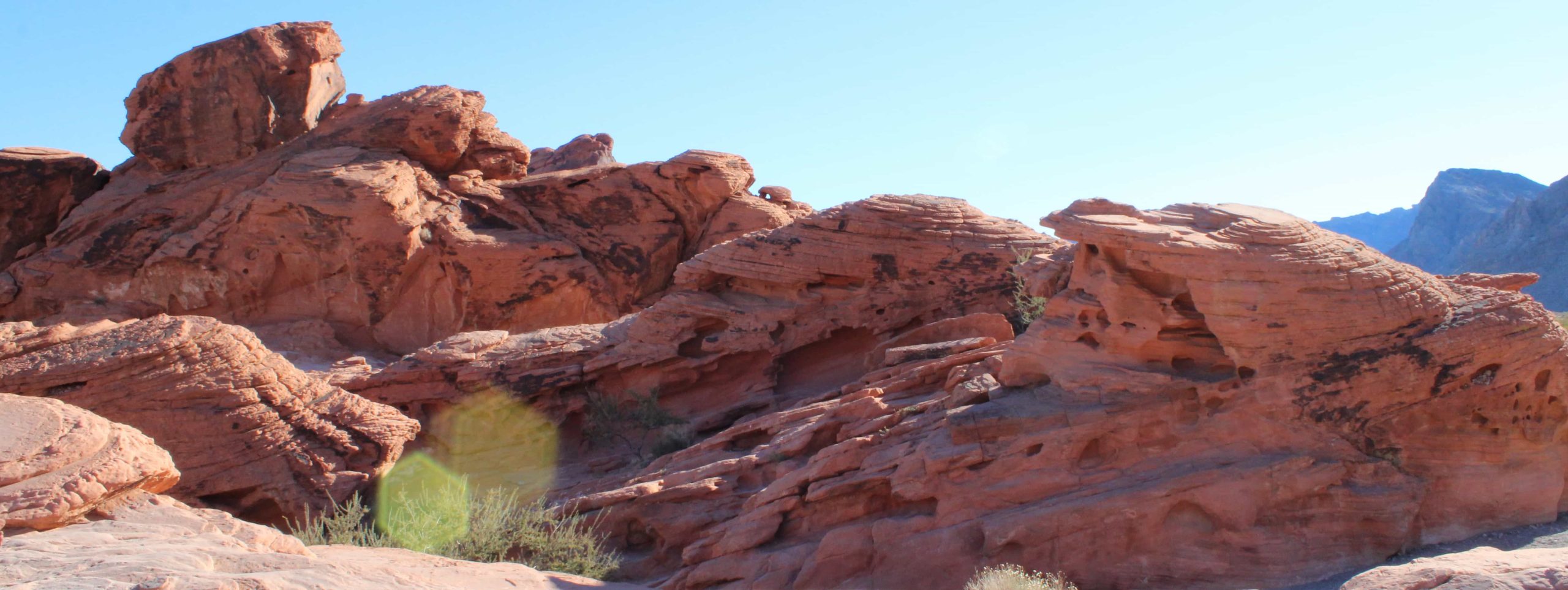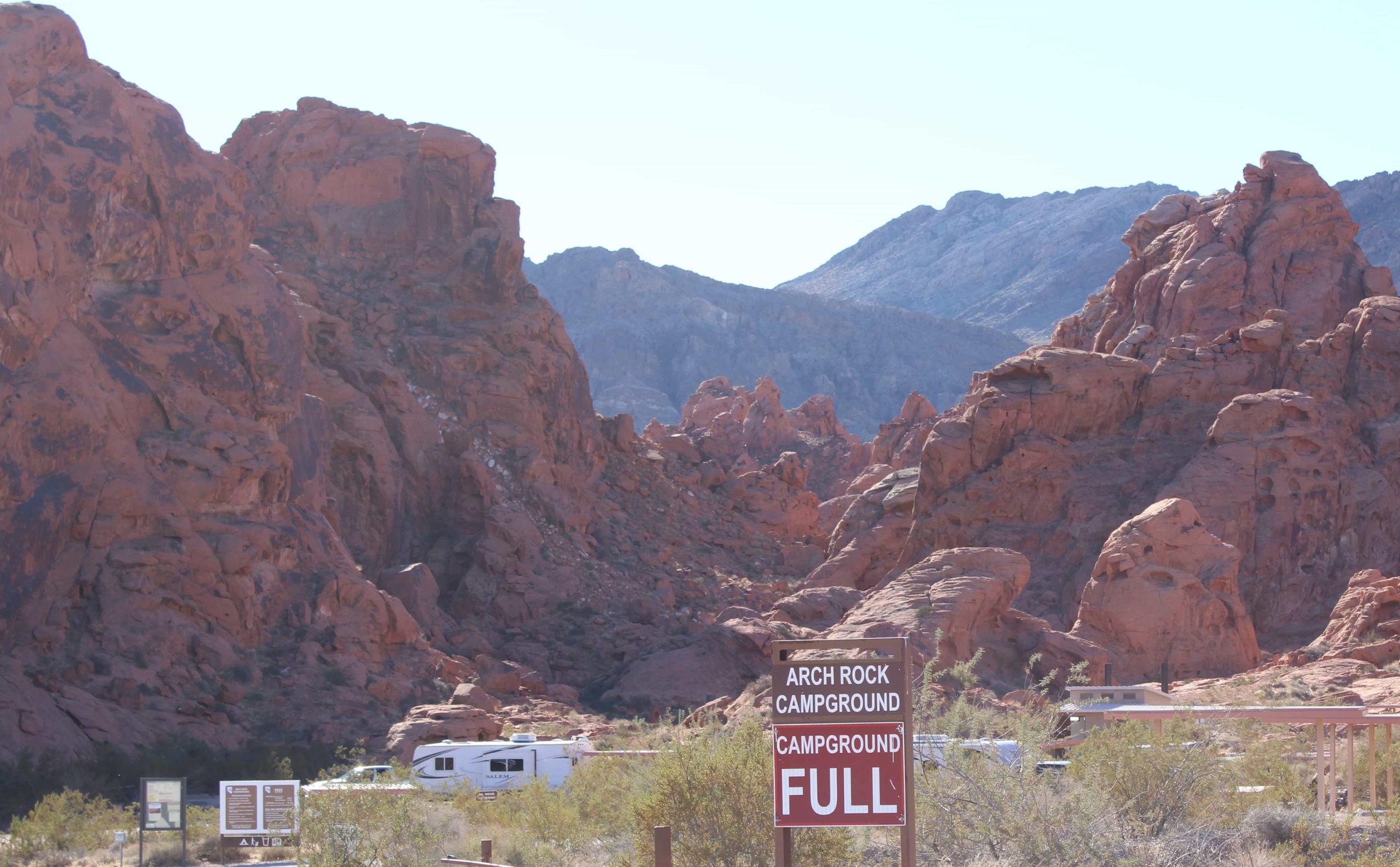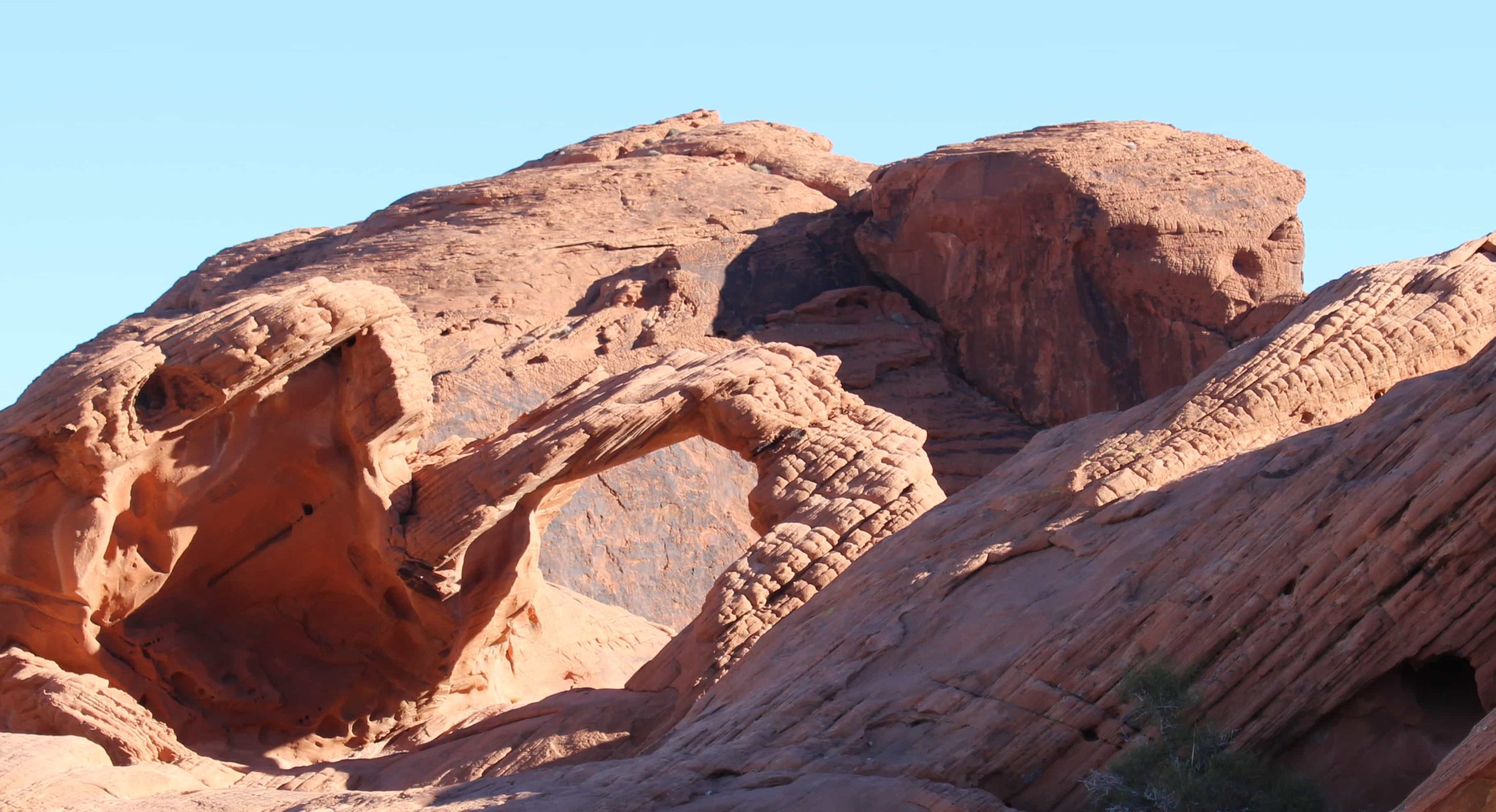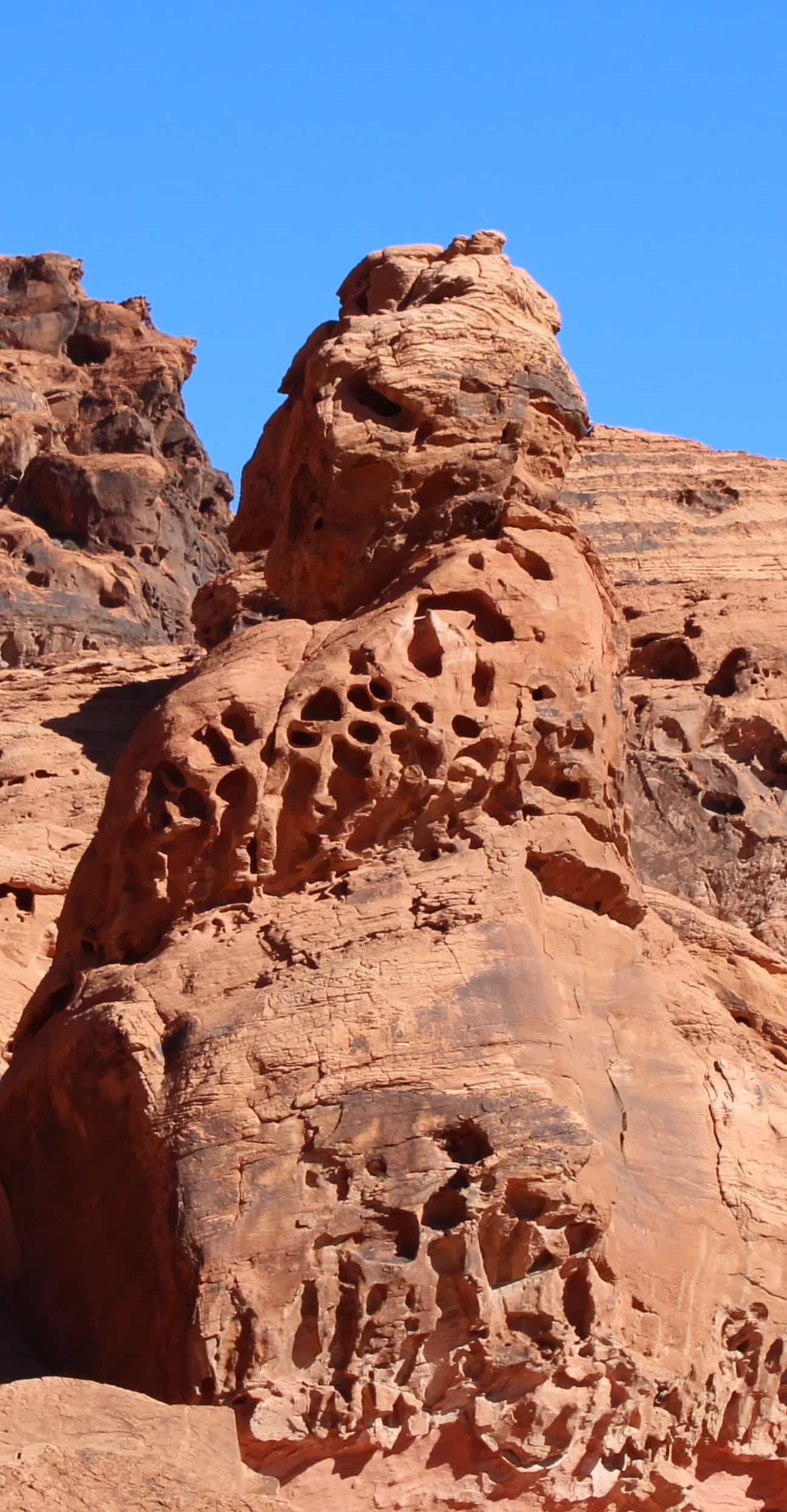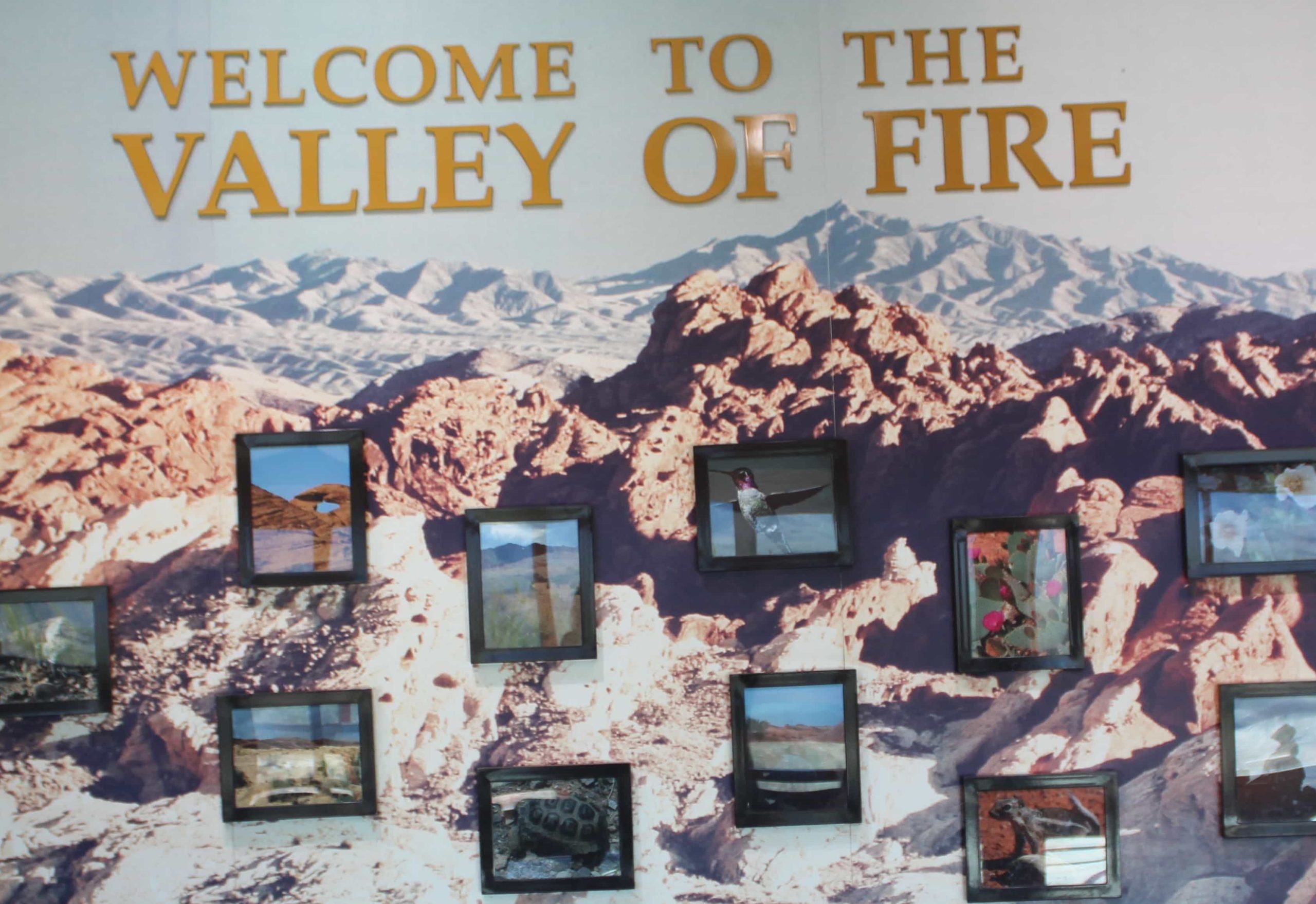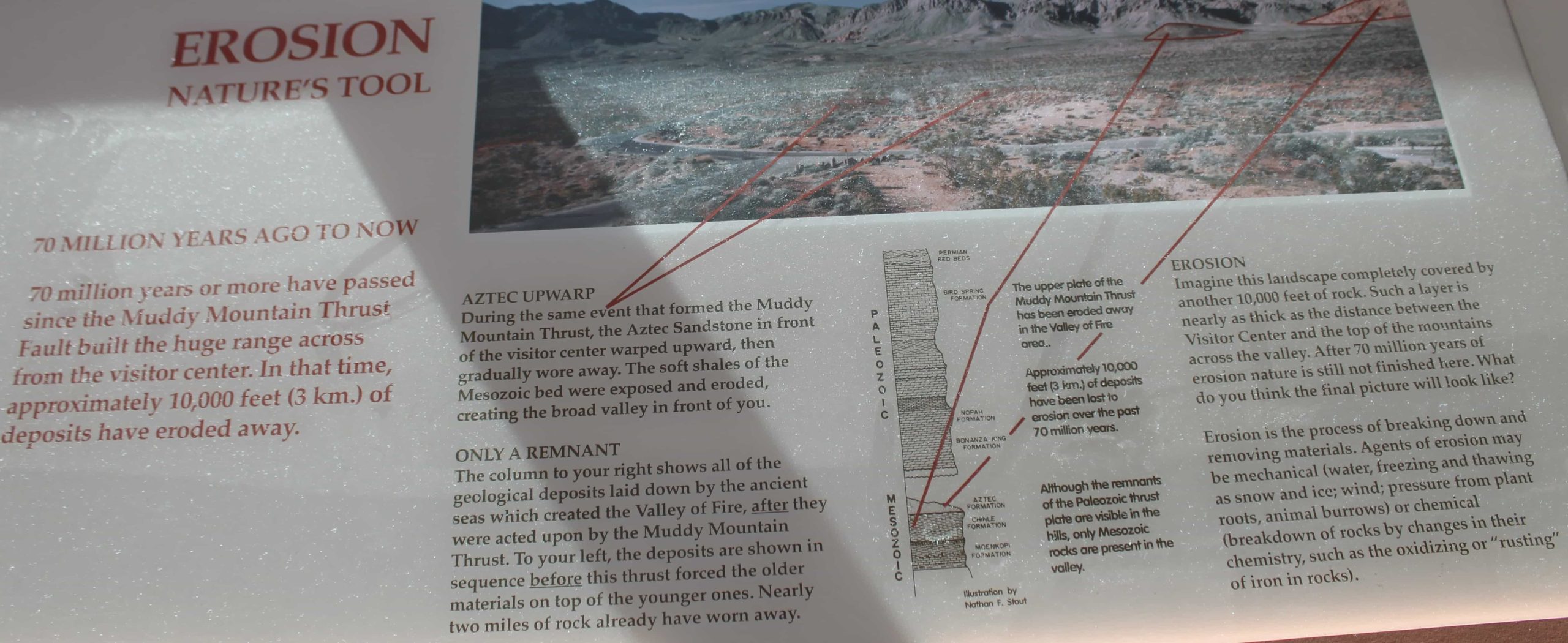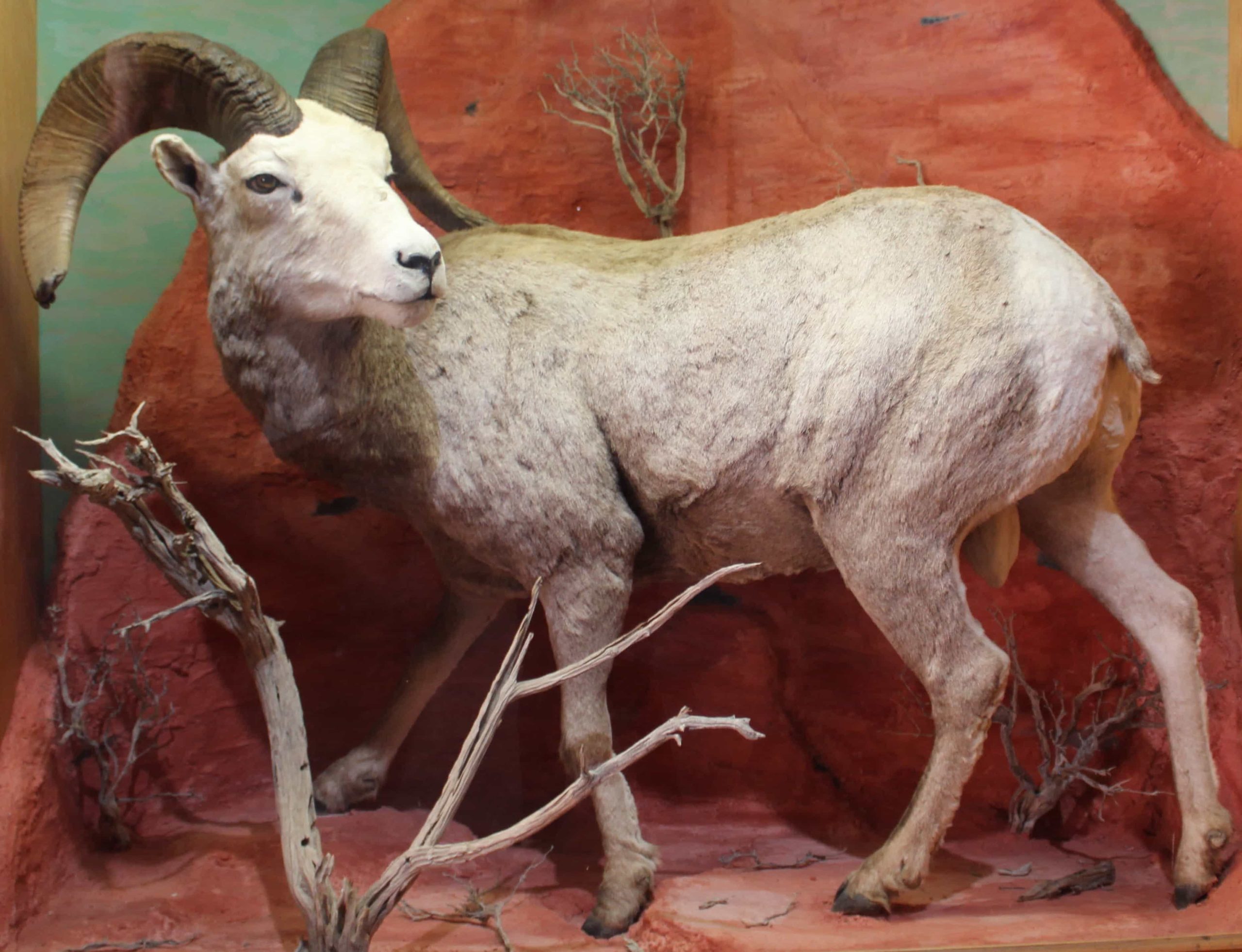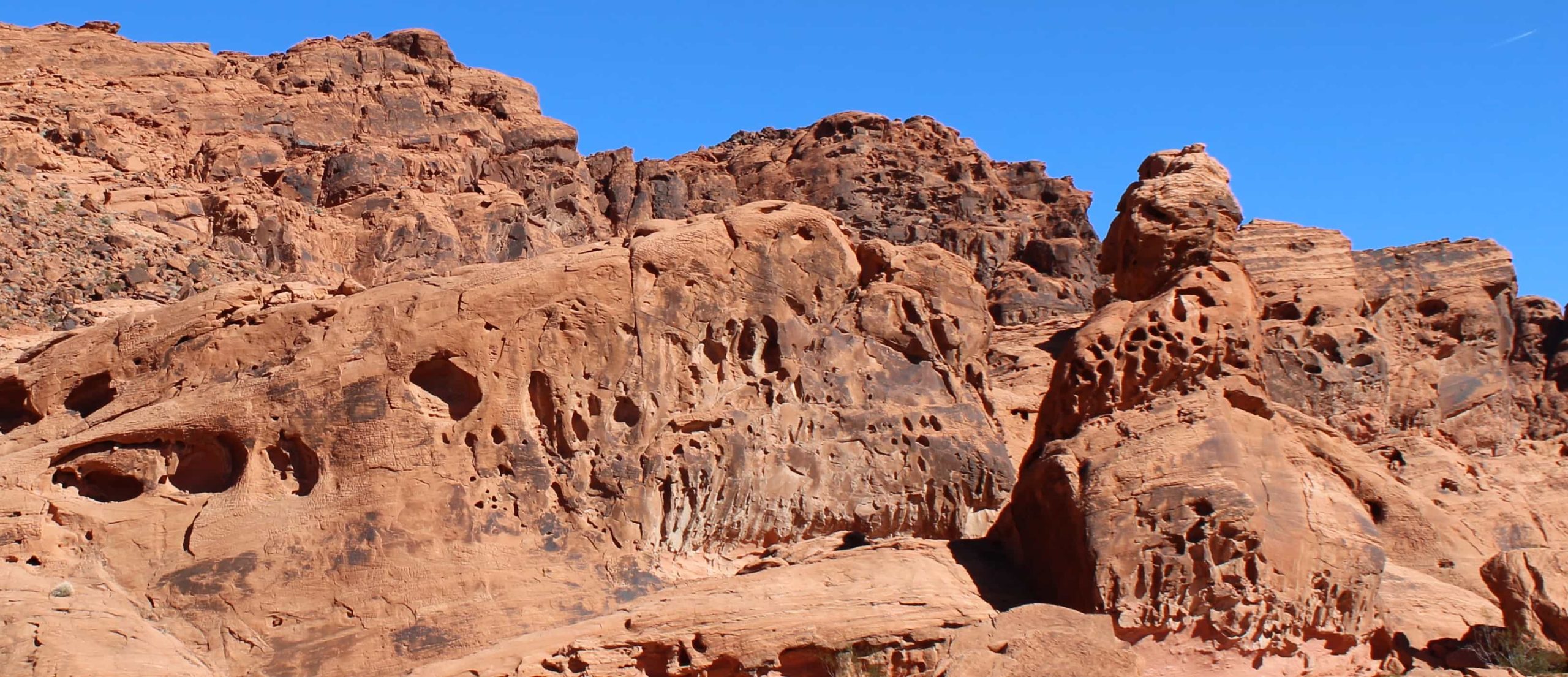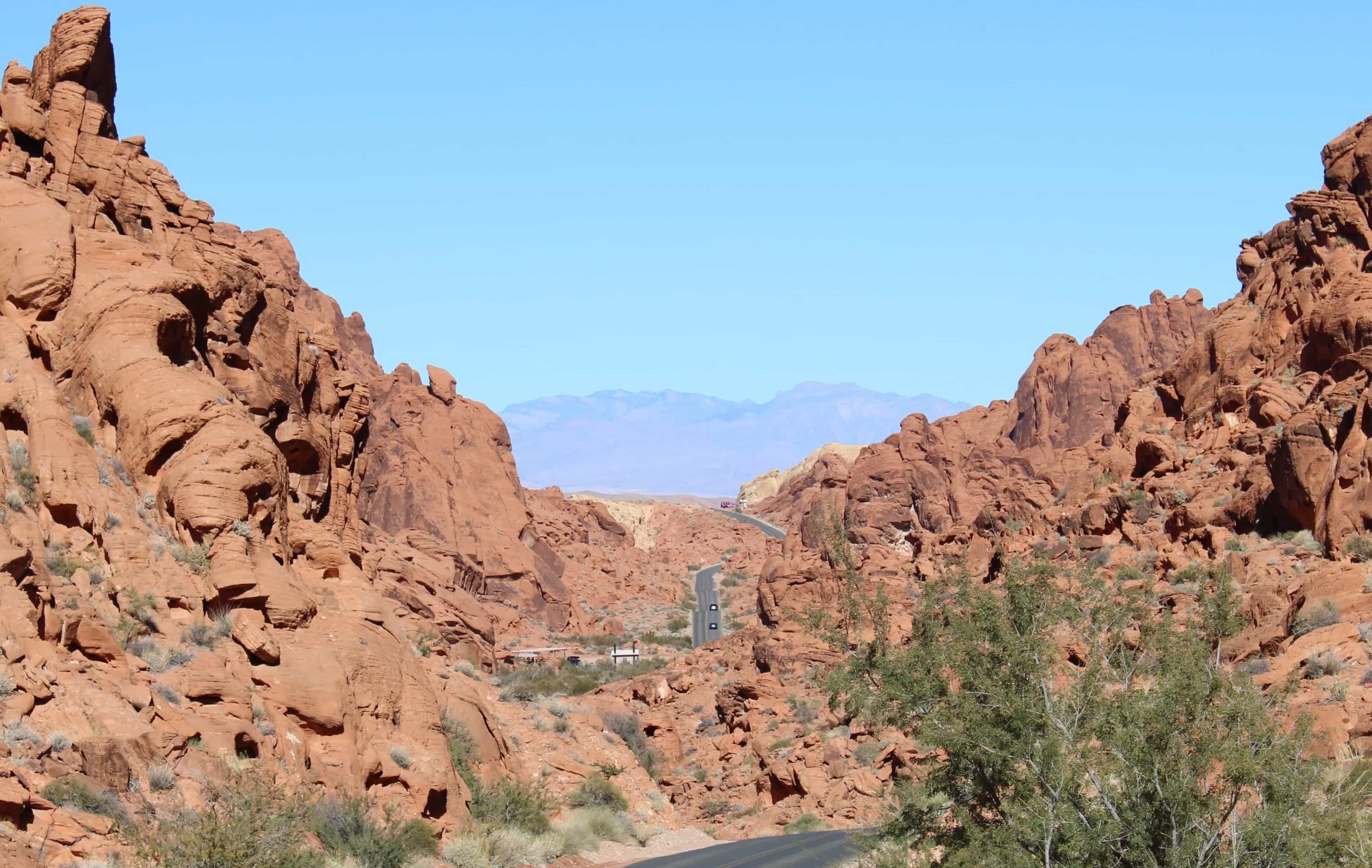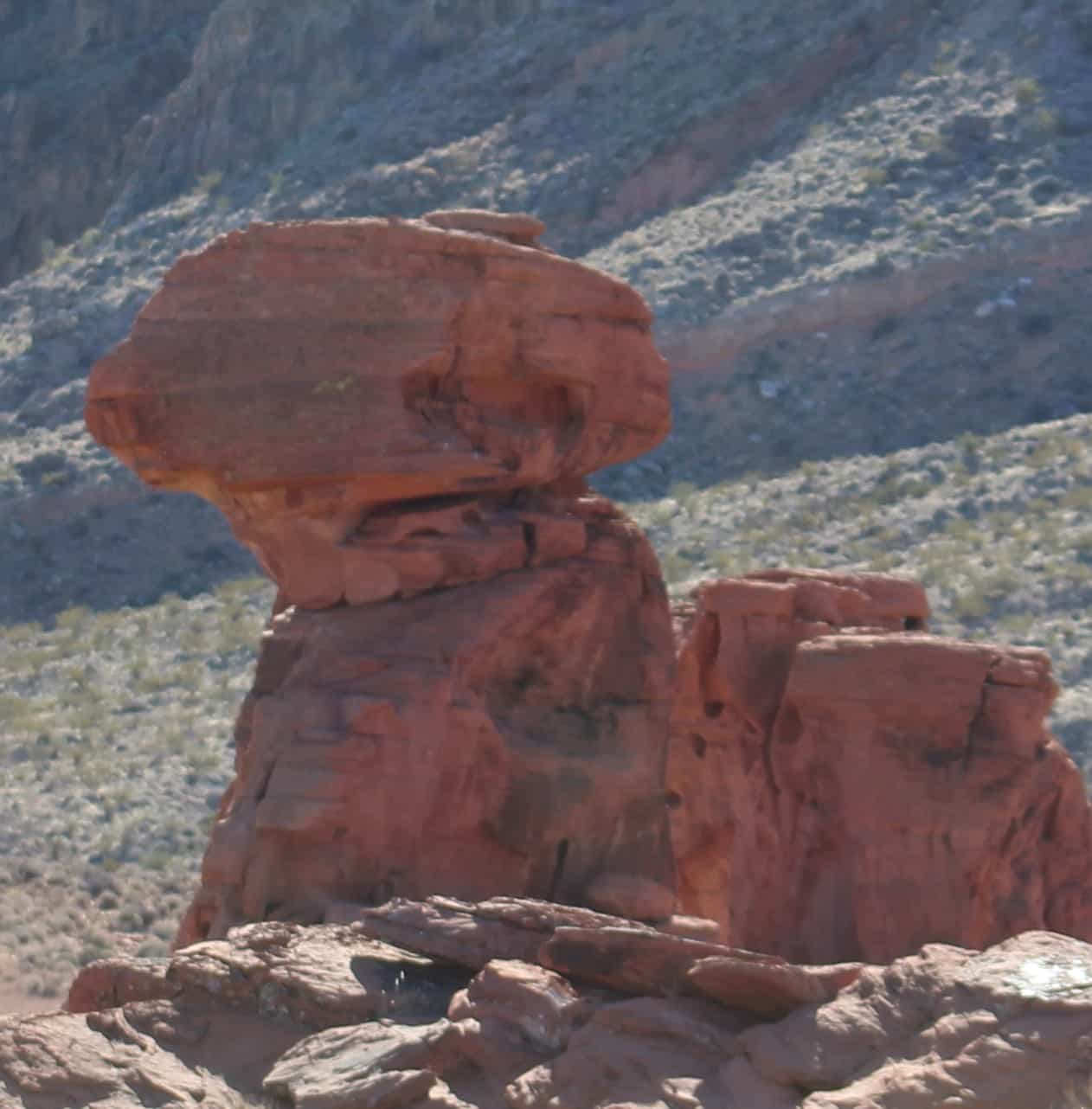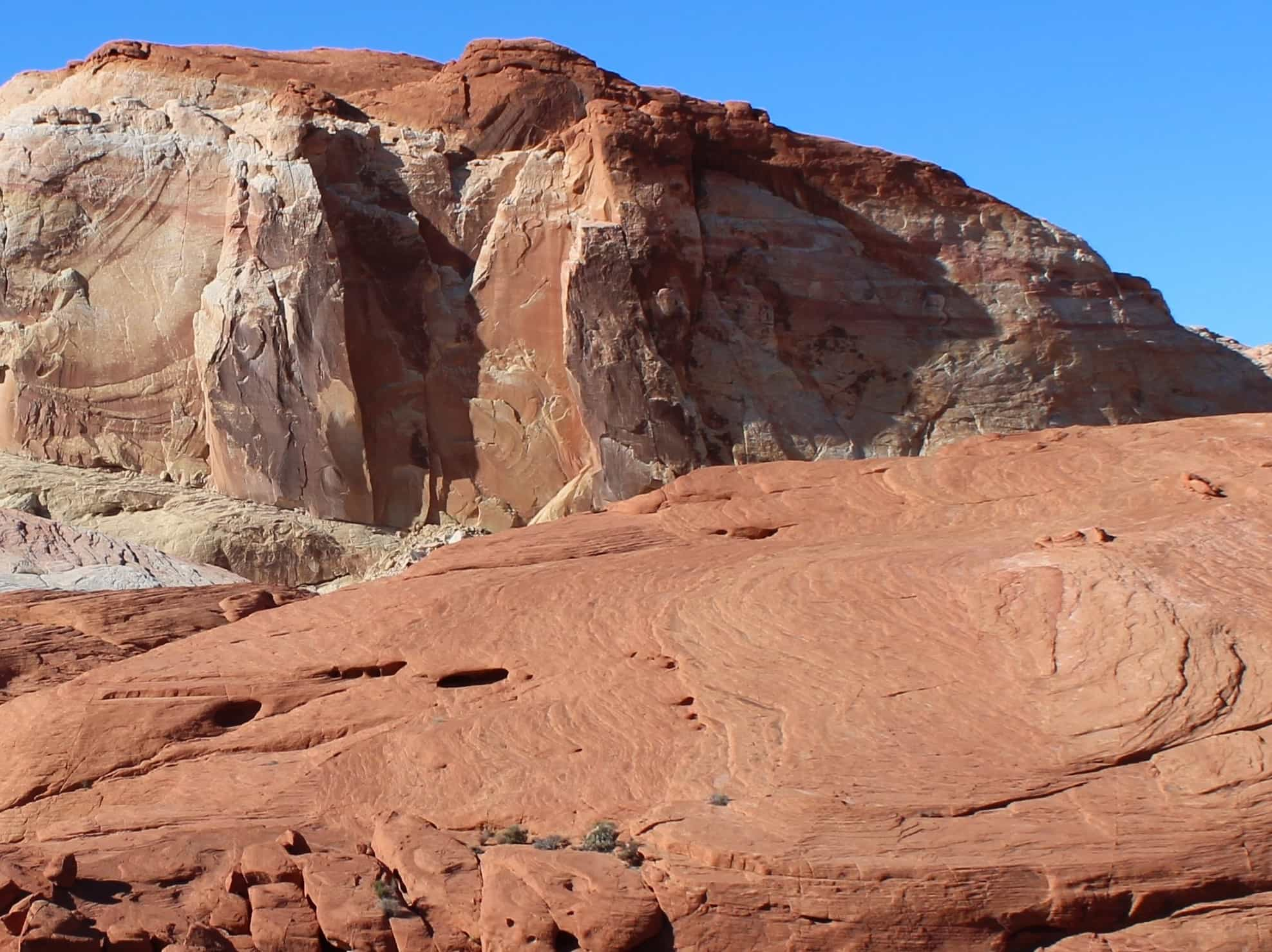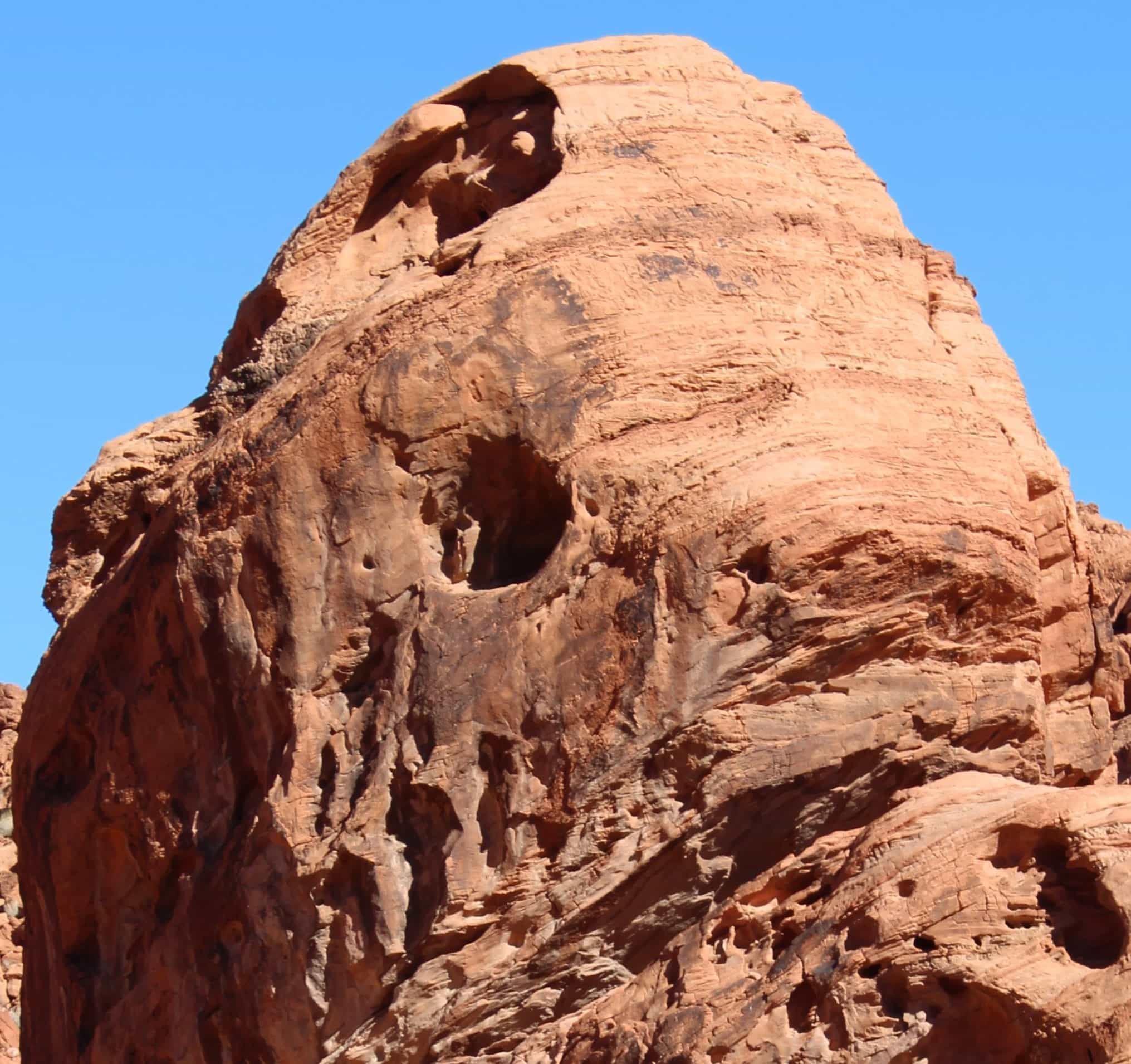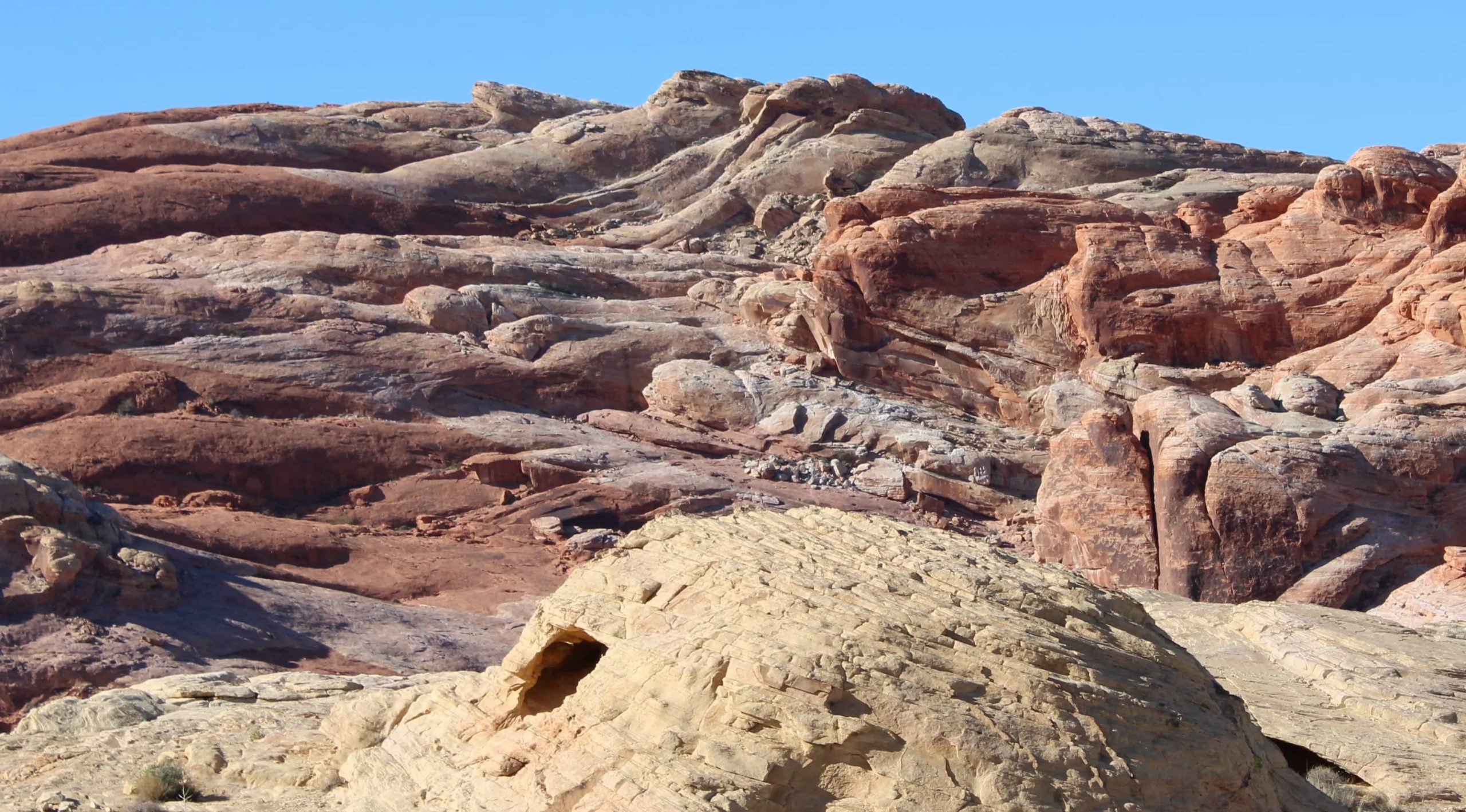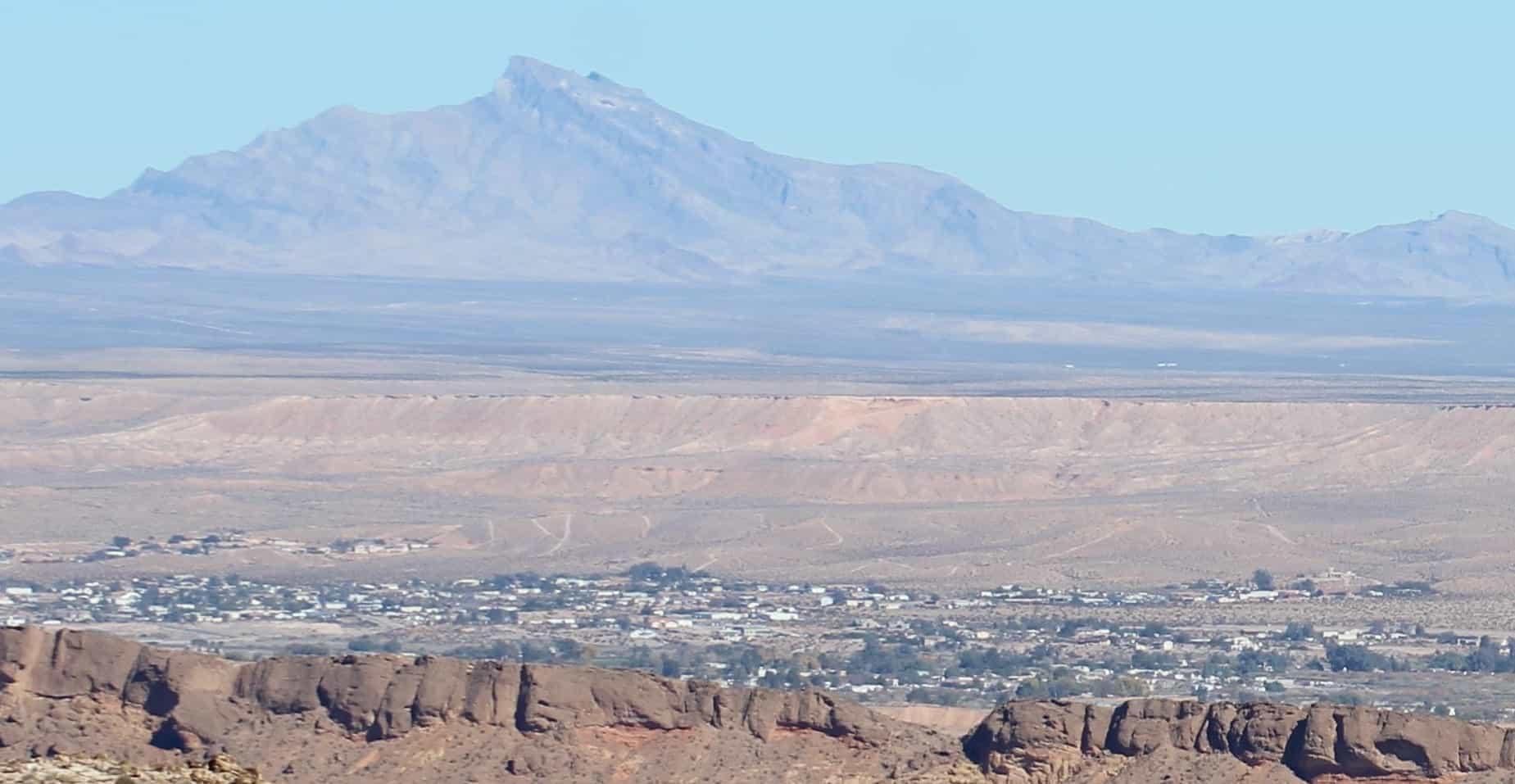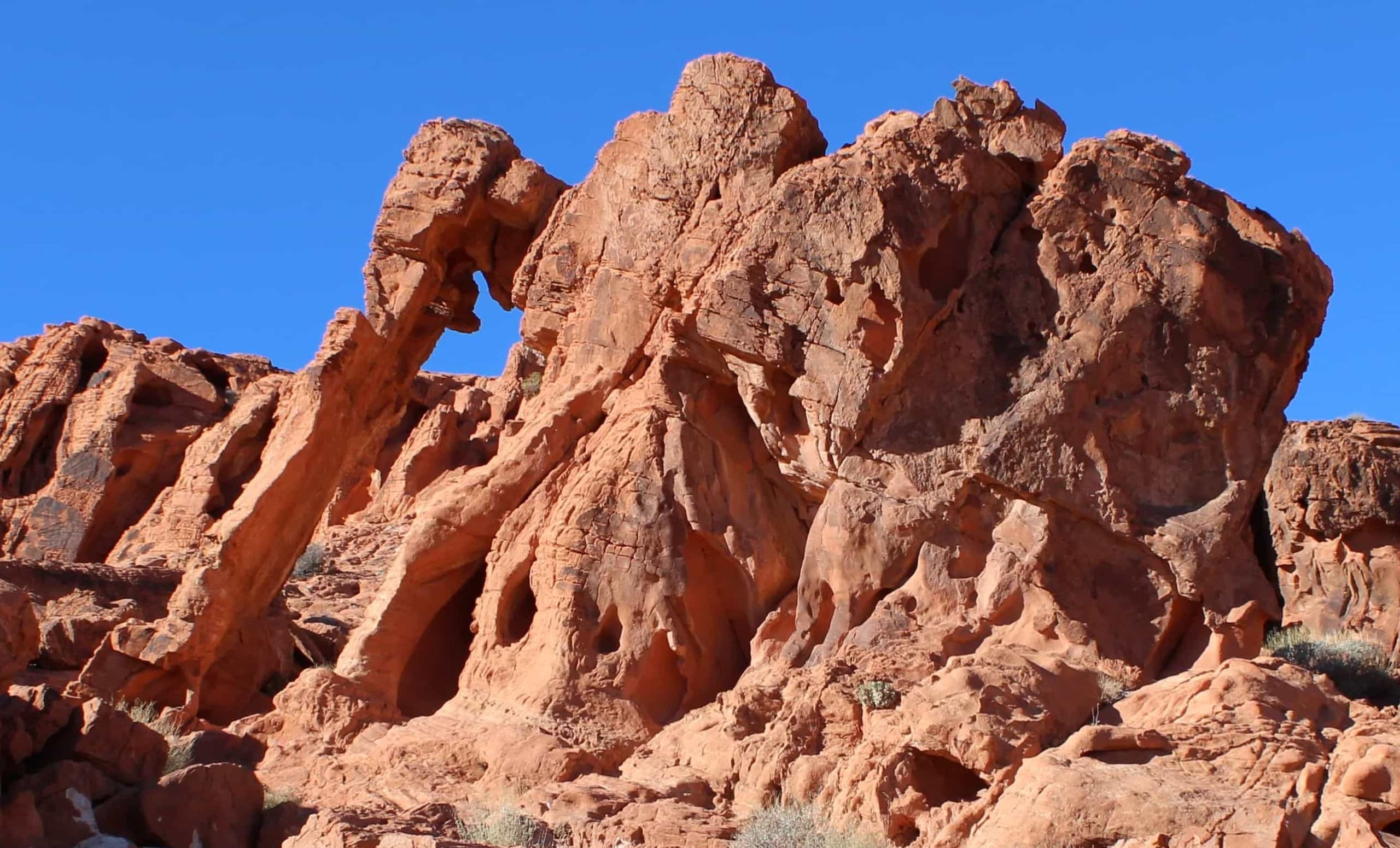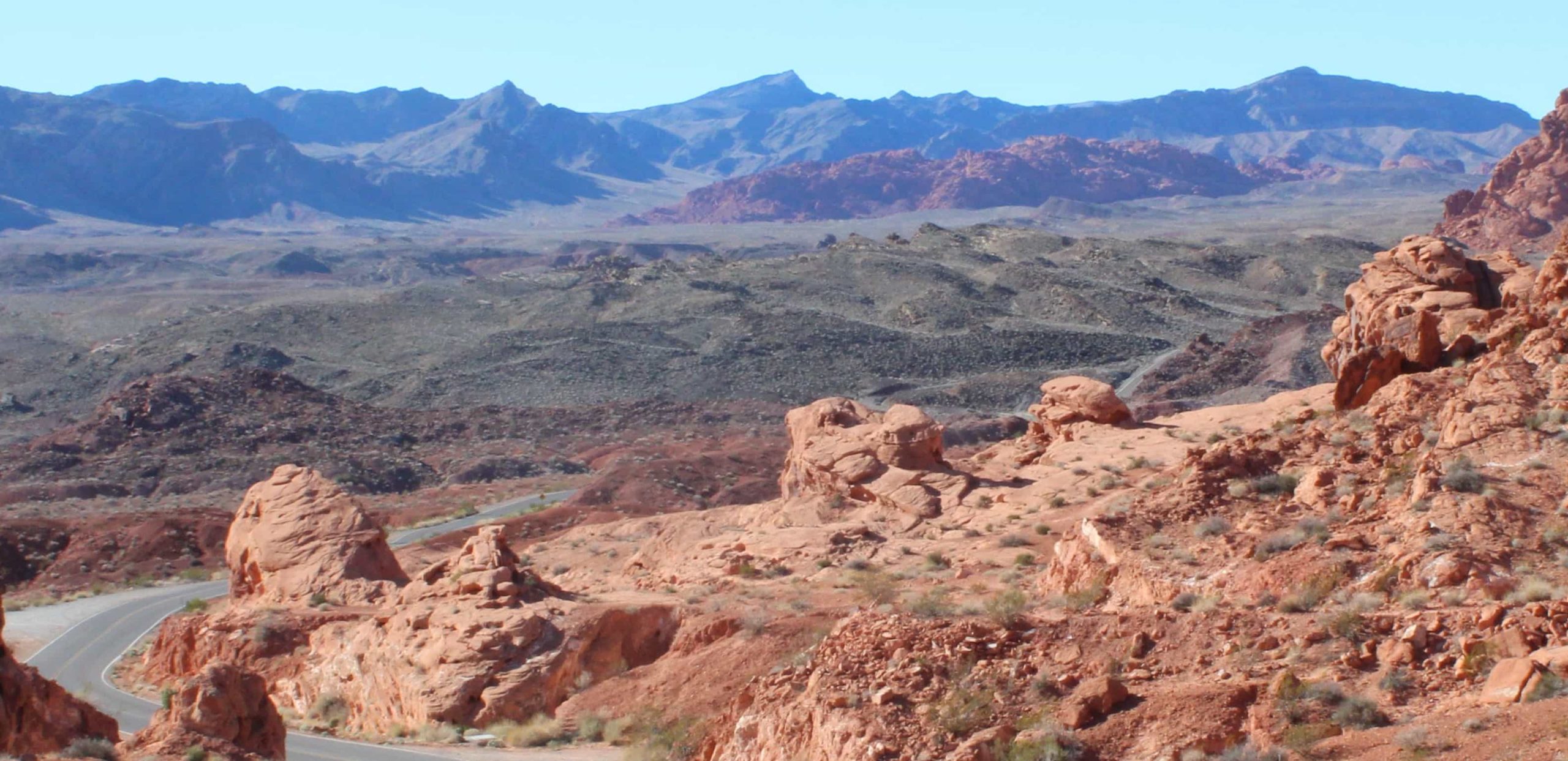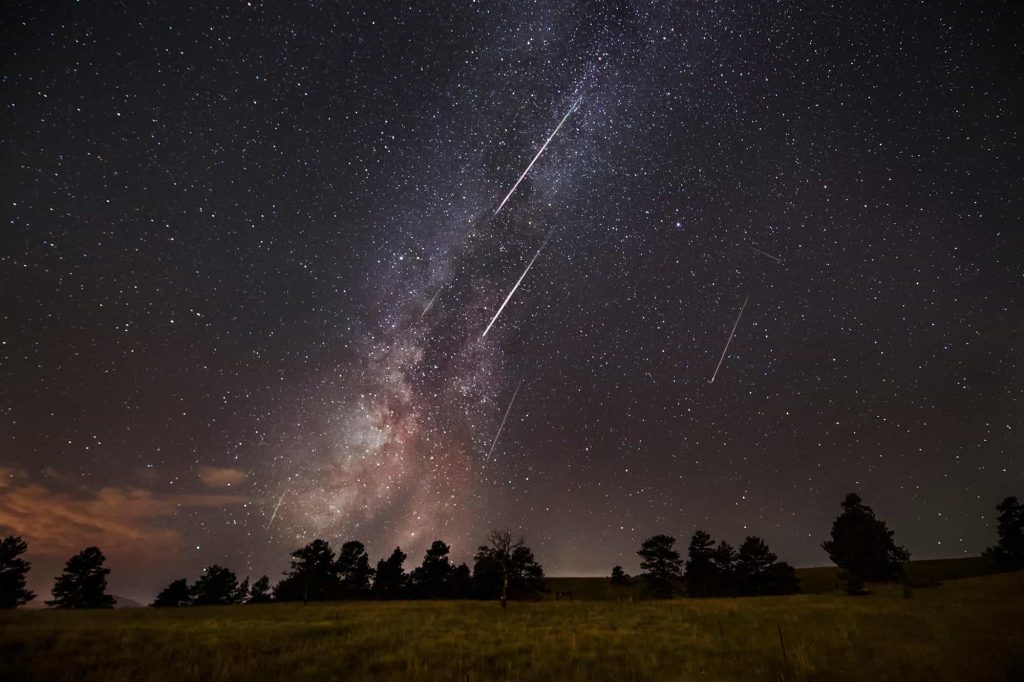Valley of Fire State Park
Las Vegas
About
Erosion Makes Fiery Red Beauty!
ABOUT
Valley of Fire State Park is named for its breathtaking landscape with vivid, fiery-red sandstone formations that formed from the great shifting of sand dunes during the age of dinosaurs approximately 150 million years ago. The park consists of over 40,000 acres of multi-colored rock displaying a wide variety of formations. It is Nevada’s oldest and largest park, dedicated in 1935.
The beautiful drive from the west entrance to the east exit is approximately nine miles. Along the way, there are several points of interest with prehistoric Indian petroglyphs, unusual multi-colored sandstone formations and historic monuments.
There are many names given to some of the formations including the arch rock, balancing rock, bee hives, seven sisters and elephant rock.

In this part of the Mohave Desert, the plant community includes creosote bush, burro bush, brittlebush, several cactus species, desert marigold, indigo bush and desert mallow.
The wildlife consists of resident birds such as the house finch, sage sparrow and roadrunner, plus there are many species of lizards and snakes, as well as the coyote, kit fox, spotted skunk, black tailed jackrabbit, antelope ground squirrel and big horn sheep.
After driving four miles, there is a visitor center with exhibits on geology, ecology, pre-history and history of the park, nearby regions, plus postcards and souvenirs. The hours are 9am to 4pm. There are two campgrounds totaling 72 units. You will find many miles of hiking trails, various picnic areas and restroom facilities.
Fees:
$10.00 – Daily use fee for Nevada residents; $15 for non-residents (per vehicle)
$20 – Camping fee for Nevada residents; $25 for non-residents (per night)
Bicyles: $2.00 per bicycle
Campground reservations can be made by phone: 702-397-2088 (9:00am-4:00pm)
Valley of Fire is a popular location for producing automobile commercials and a setting for television shows and major films such as Total Recall, Star Trek Generations and Transformers.
DIRECTIONS
Take the I-15 north out of Las Vegas, watch for the signs after approximately 32 miles, then take the 75 exit for Valley of Fire and Lake Mead
TRAVEL TIPS
Wear good walking shoes
Bring sun protection, snacks and lots of water
Make camping reservations well in advance
Make sure your camera batteries are fully charged – there’s lots of photo ops!
HISTORY
It was almost 600 million years ago that the sea invaded the area of Valley of Fire. The sandstone is from the Jurassic period and is the remnant of sand left behind by the wind after the inland seas subsided. About 70 million years have passed since the Muddy Mountain Thrust Fault built the huge range across from the visitor center.
The petroglyphs carved into the rocks by the basketmaker culture occurred about 2,500 years ago, followed by the early Pueblo culture. In 1965, Paiutes lived in the south end of the Moapa Valley where farming, ranching and mining occurred along a narrow stretch of water.
In 1912, a rough road was built as part of the Arrowhead Trail connecting Salt Lake City with Los Angeles allowing people to travel through what came to be known as the Valley of Fire. In the early 1920s, the archeological richness and recreational potential of the area were recognized and approximately 8,500 acres of federal public domain (the original Valley of Fire tract) were given to the state of Nevada.
In 1933, the Civilian Conservation Corps built the first facilities and campgrounds in the park; and, on Easter Sunday of 1934, Valley of Fire was formally opened as Nevada’s first state park. It received its legal designation from the Nevada State Legislature in 1935. In 1936, approximately 9,000 people visited the newly established park. Today, several hundred thousand people visit every year.
